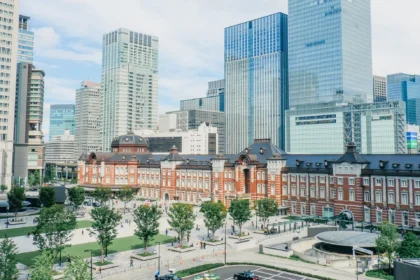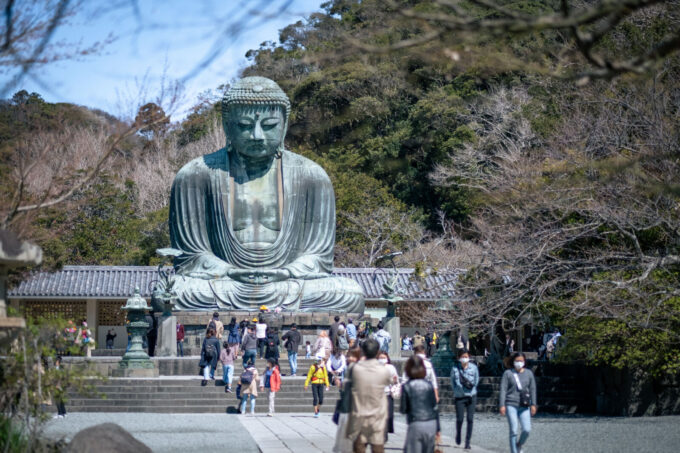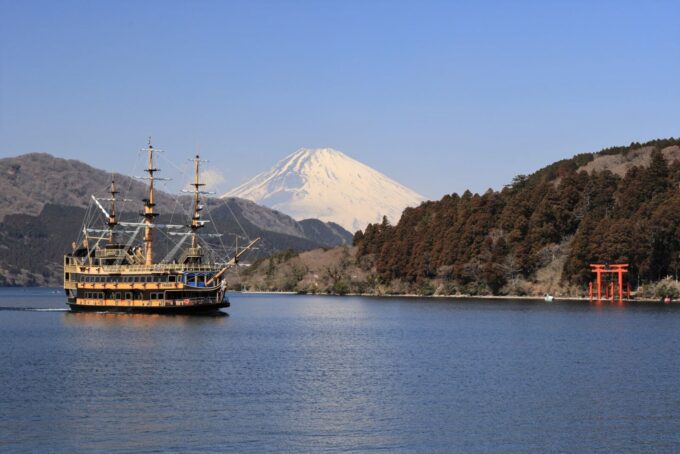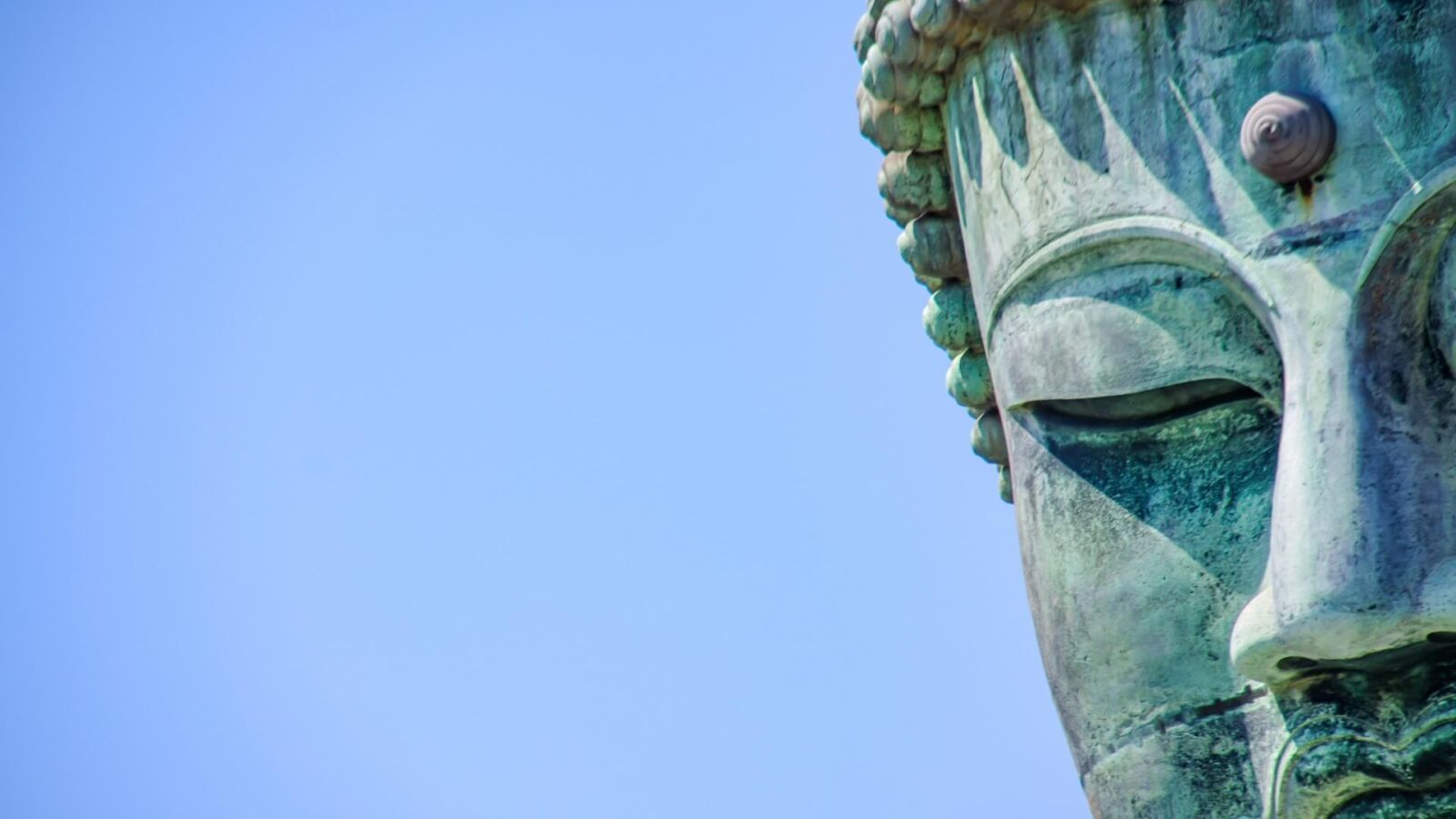
Less than an hour from Tokyo, Kamakura was the seat of power for the Minamoto shogunate and today retains multiple temples and shrines making it hugely popular with both Japanese and international visitors. On this page you will find the following information:
-- 20 Best Things to Do Around Kamakura
-- Best Places to Stay When Visiting Kamakura
— Things to Do Near Tokyo : Best Day Trips and Overnight Getaways
Following the victory of the Minamoto clan over the Taira clan in the Gempei War of 1185, the new military government – called the ‘Kamakura Bakufu’ was established in the Kamakura and Minamoto Yoritomo was declared shogun. From that year onward, the Minamoto clan followed by the Hojo Regents controlled the Emperor – still resident in Kyoto - and controlled Japan from Kamakura in what today is referred to as the 'Kamakura Period' of 1192 to 1333.
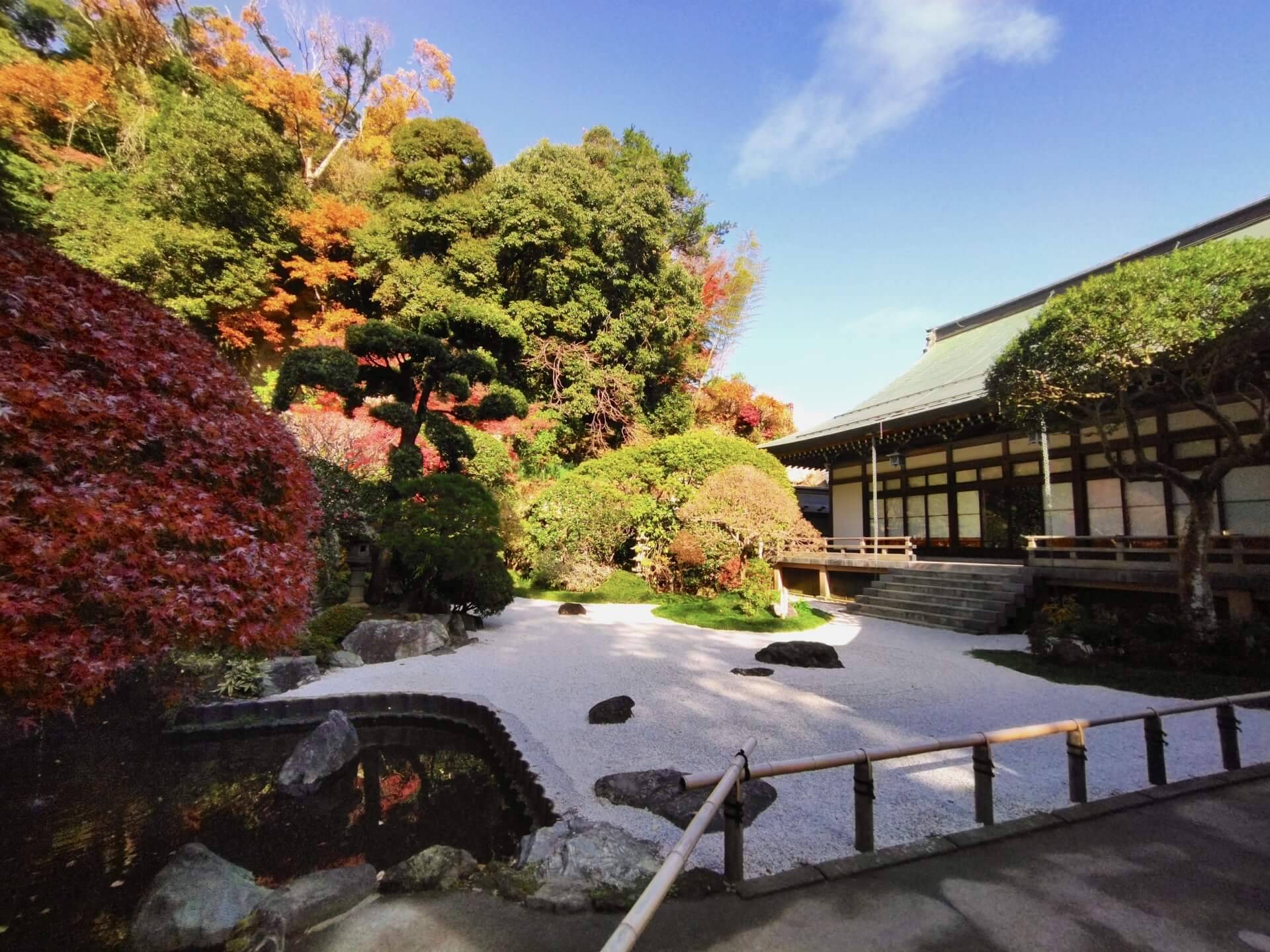
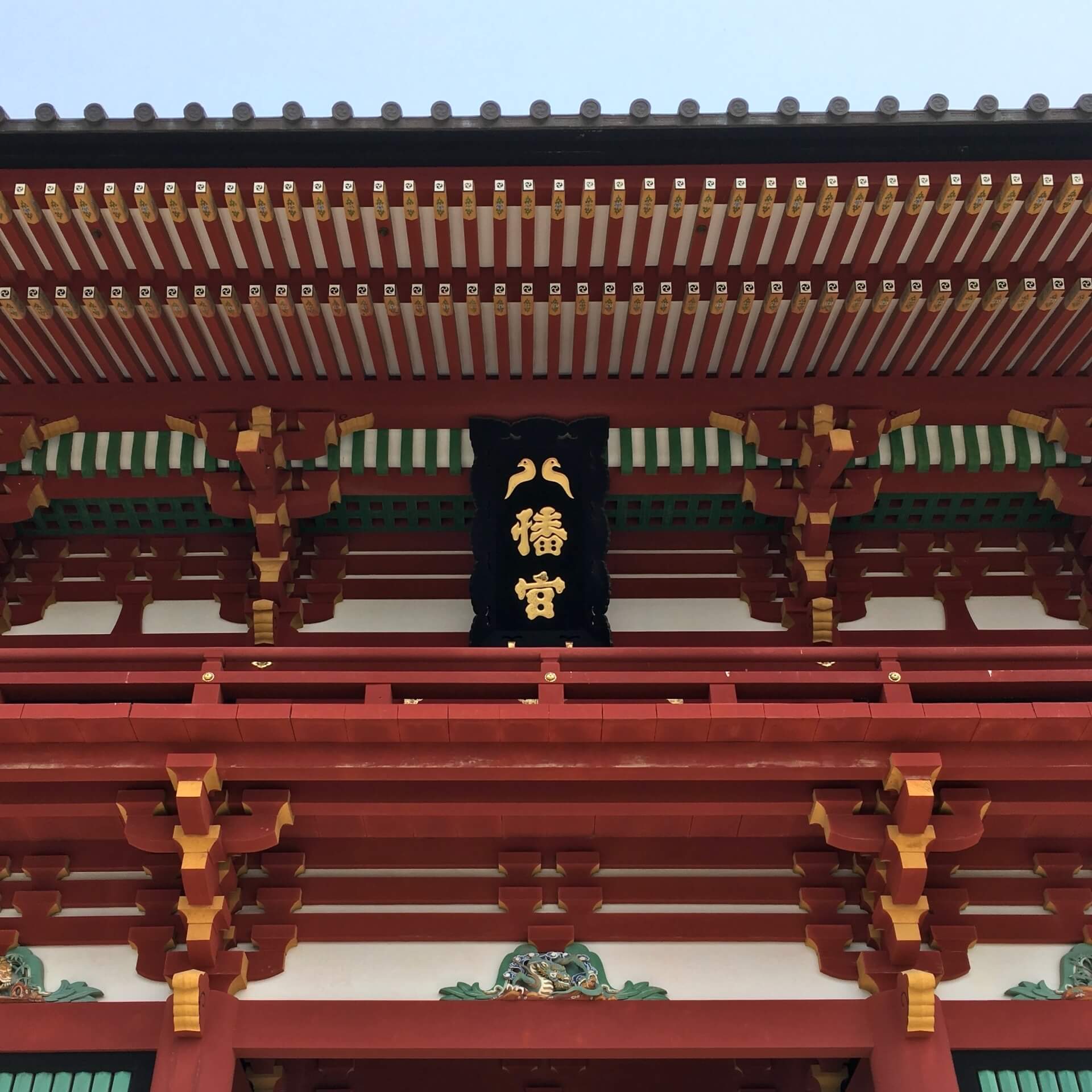
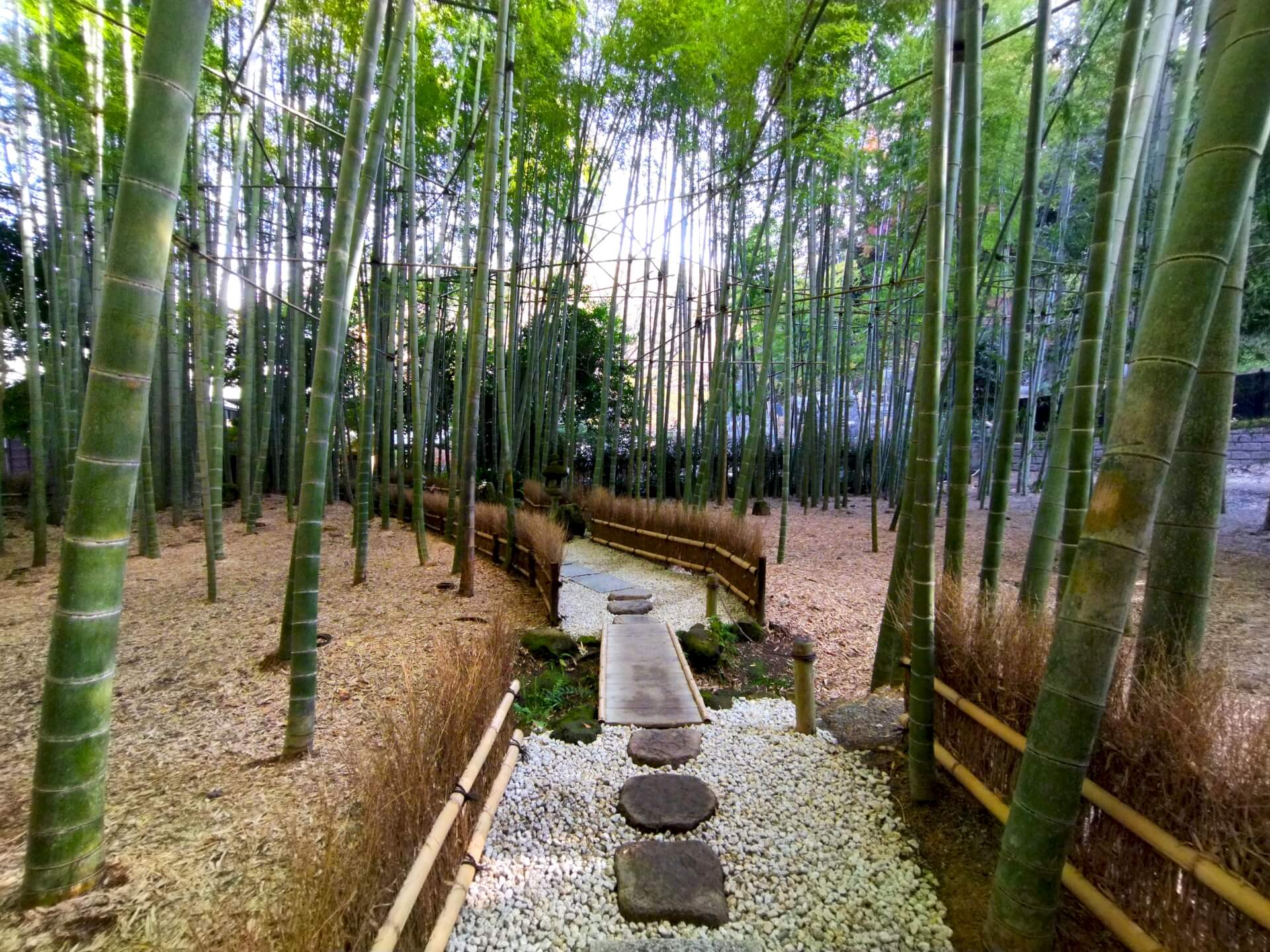
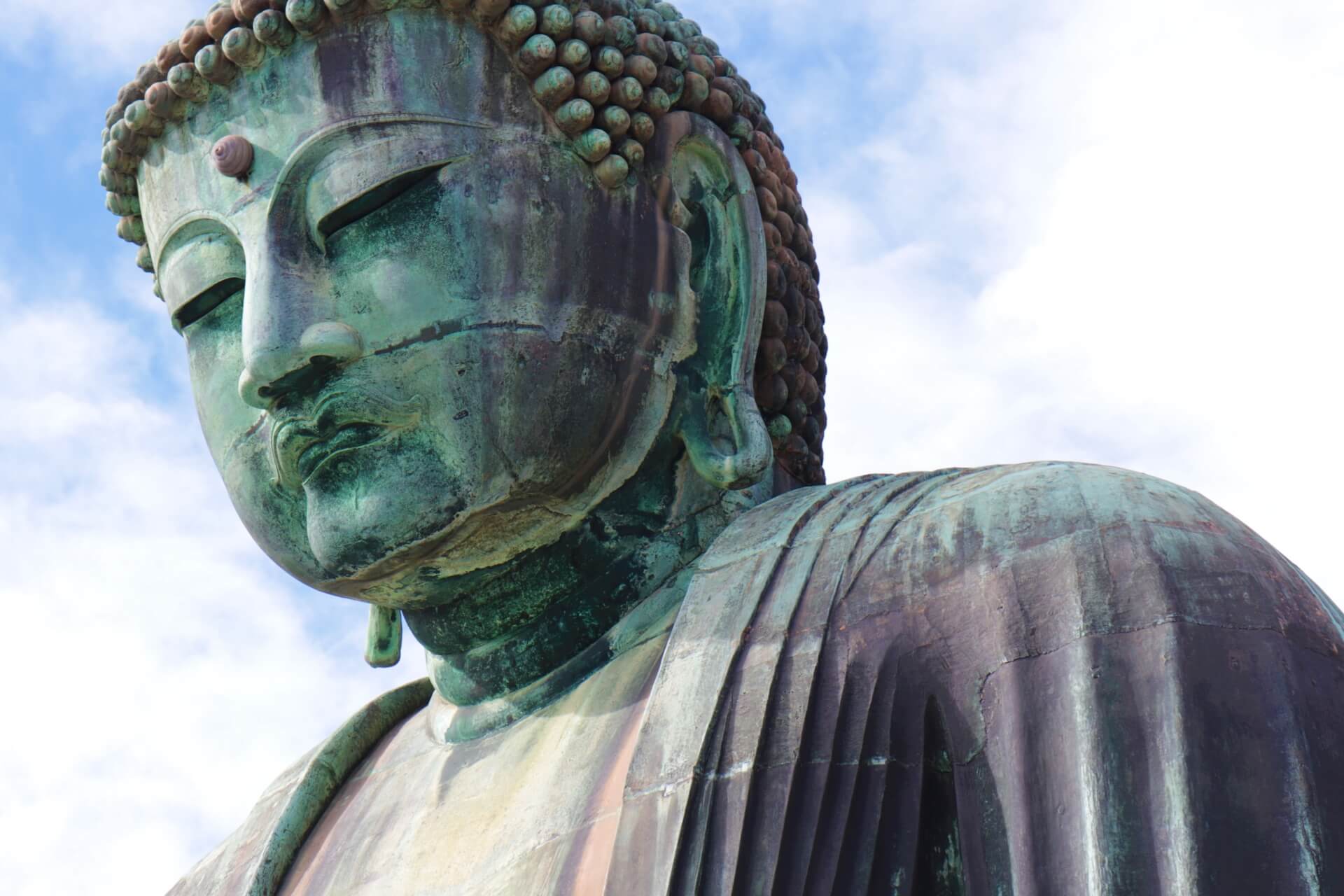
Throughout that period, Kamakura functioned as the seat of power for all of Japan with numerous temples, shrines, palaces and administrative buildings manifesting the importance and wealth of the city. Today, many temples and shrines remain, making Kamakura one of Japan’s most popular destinations and all within easy reach of Tokyo. Located an hour by train to the south of Tokyo, Kamakura can be enjoyed as a daytrip from the capital or as an overnight or multi-day visit, allowing you to enjoy all that it has to offer along with nearby destinations including Enoshima and Hakone.
If after reading this page you want to discover Kamakura for yourself, then join our ’1 Day Trip to Kamakura and Enoshima : Shrines, Seaside, Temples and Tea’ tour!
1 Day Trip to Kamakura and Enoshima : Shrines, Seaside, Temples and Tea
- Spots:
- Pick-up:
- Drop-off:
WHERE IS KAMAKURA?
Kamakura sits approximately 60km to the south of central Tokyo - around 60 minutes by train – and 25km to the south of Yokohama – 30 minutes by train. Located nearby the coast of Sagami Bay, Kamakura is an easy daytrip from Tokyo and Yokohama and can easily be combined with a visit to nearby Hakone – which lies 50km to the west. Once the seat of power of the Kamakura Shogunate – from 1185 to 1333 – Kamakura was at that time the largest settlement in Japan and today is a town that retains much of its historic character through the preservation of its many temples and shrines along with a busy calendar of festivals throughout the year. Kamakura is easy to reach by train from Tokyo, Yokohama, Hakone and other starting points making it one of Japan’s most popular destinations for international visitors.
20 BEST THINGS TO DO AROUND KAMAKURA
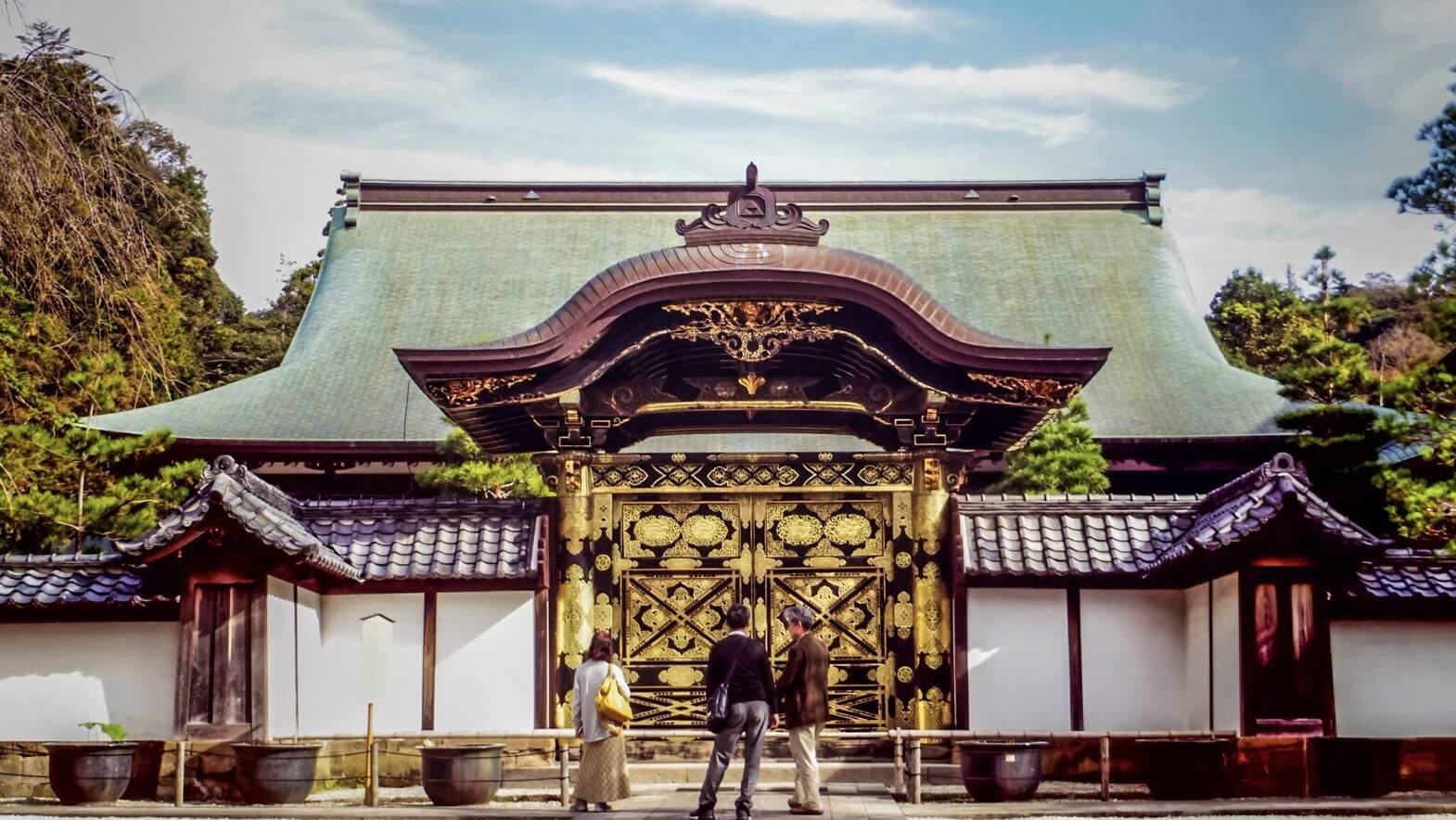
Kamakura is one of Japan's most popular historic cities and within easy reach of Tokyo, can be enjoyed as a day-trip from the capital or as on overnight or multi-day stay. Among the city’s most popular destinations you’ll discover its 'Five Great Zen Temples' – including Kencho-ji, Engaku-ji, Jufuku-ji, Jochi-ji and Jomyo-ji – of which, three are discussed below - along with the grand Tsurugaoka Hachiman-gu, Kamakura’s most important Shinto site. The city hosts a busy calendar of festivals with spring and autumn being particularly good times of year to visit thanks to the seasonal beauty of the cherry blossoms and the changing leaves - both of which frame the temples and shrines in splendid colour. But of course, any list of the best things to do in and around Kamakura has to start with…
1 / KOTOKU-IN & THE ‘GREAT BUDDHA OF KAMAKURA’ / all year round
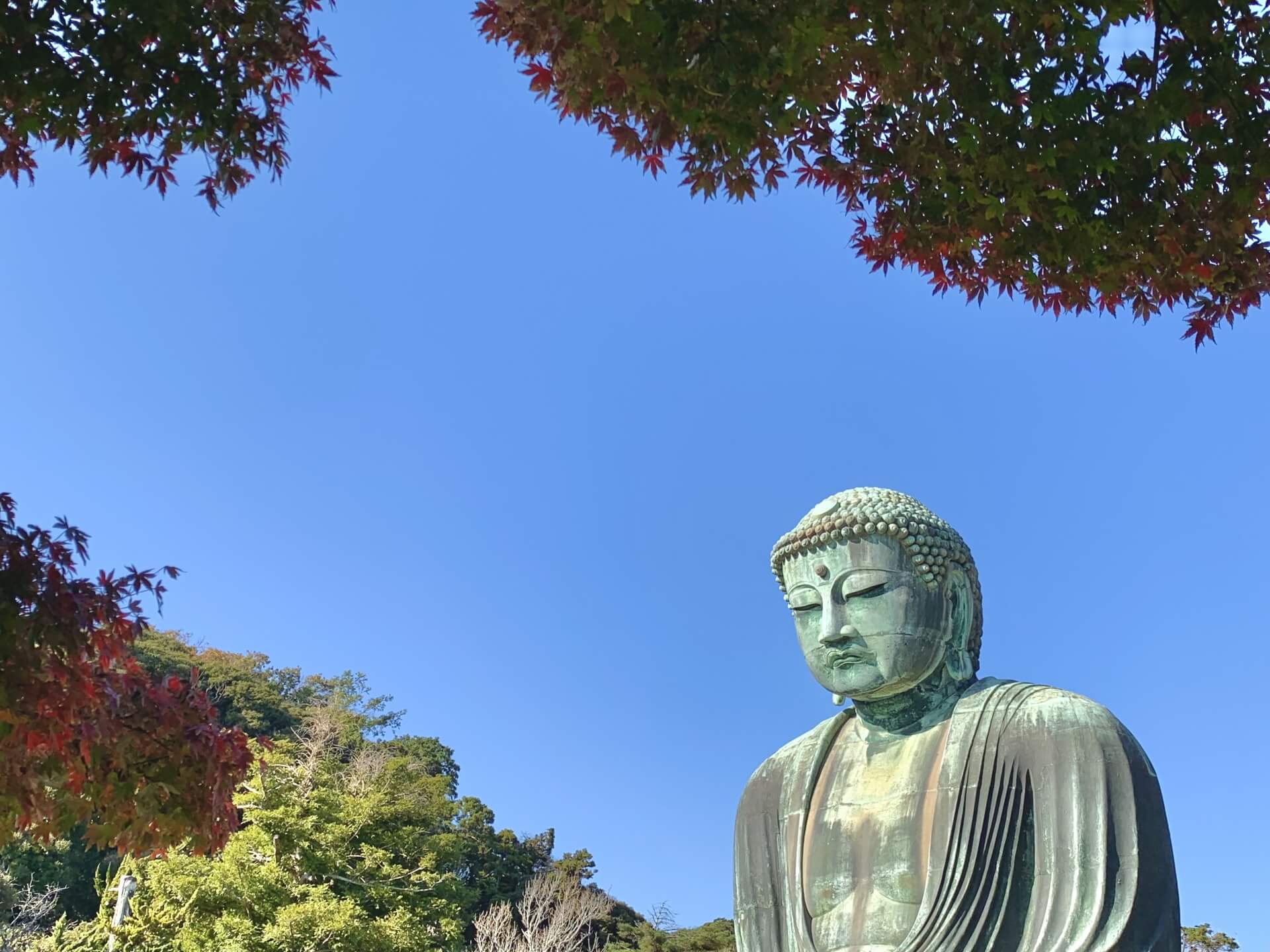
‘Kamakura Daibutsu’ or the ‘Great Buddha of Kamakura’ is, as the name suggests, one of Japan’s great Buddha statues and without question, the most famous attraction in the city. Standing 11.4 metres in height and cast from bronze, the statue dates from 1252 and originally sat within a large temple. Like so many temples and historic buildings in Japan, the temple was destroyed by fire long ago leaving the statue sitting outside since the late-15th century.
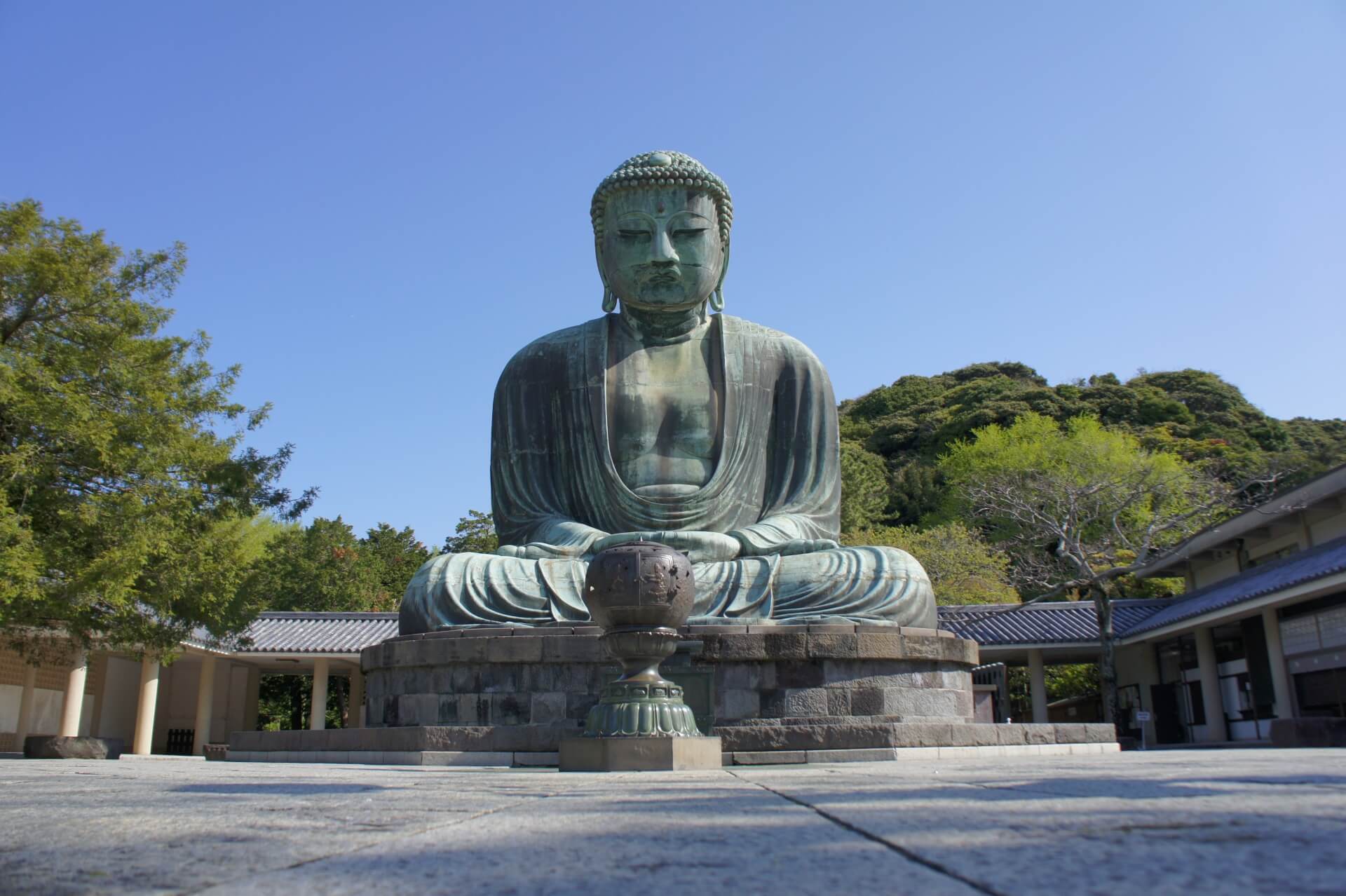
The statue depicts ‘Amitabha’ or the ‘Celestial Buddha’ and is one of Japan’s most instantly recognisable Buddhist sites. It is a registered National Treasure and Japan’s second most-celebrated Buddha statue behind the immense statue housed within Nara’s Todai-ji Temple. Kotoku-in is open daily from 08:00 until 17:30 (or until 17:00 from October to March). Admission is JPY300. To get there, take the train from Kamakura Station to Hase Station – 4 minutes / JPY200 – from where the temple and statue are around a 5 to 10 minute walk.
2 / KENCHO-JI TEMPLE / all year round
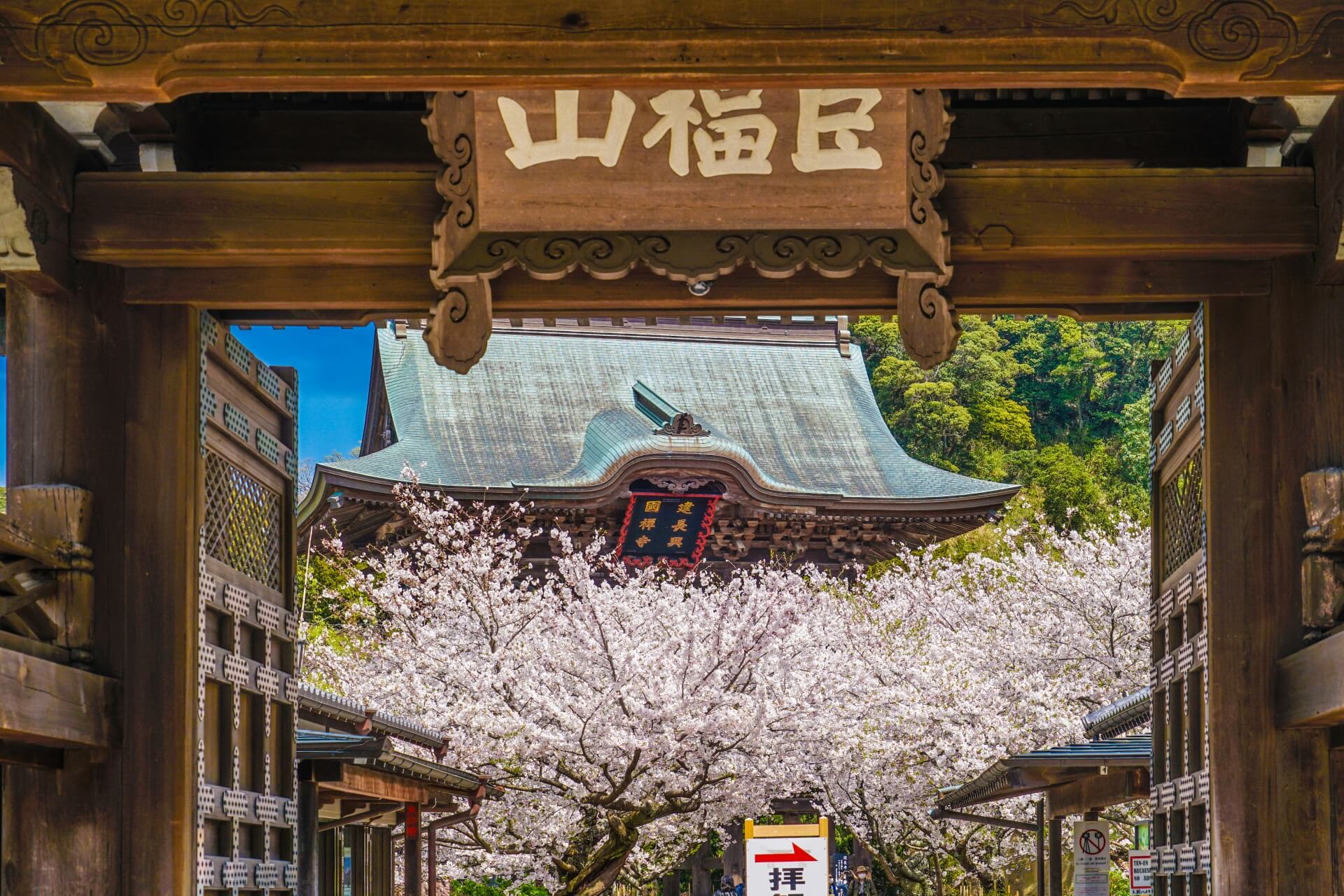
Kencho-ji is considered the most important of the ‘Kamakura Gozan’ or 'Five Great Zen Temples’. Founded in the mid-13th century, it is the oldest Zen training monastery in Japan and between the 14th and 15th centuries, the complex had expanded to include up to 49 subtemples over a much larger area that what remains today. Sadly, many of those temples were lost to fire in those centuries but what remains today is impressive and should not be missed when visiting Kamakura. The exiting complex includes the ‘Sanmon’ (main gate), ‘Bonsho’ (temple bell), ‘Butsuden’ (Buddha Hall), ‘Hatto’ (Dharma Hall) and ‘Hojo’ (main hall). The temple complex is surrounded by thick forest with trails and stairways leading to small shrines and an observation deck from where, on clear days, you can spot Mount Fuji. Kencho-ji is open daily form 08:30 to 16:30. Admission costs JPY500. To get there, take the train from Kamakura Station to Kita-Kamakura Station – 3 minutes / JPY140 - from where it’s a 15 to 20 minute walk to the temple.
3 / ENGAKU-JI TEMPLE / all year round
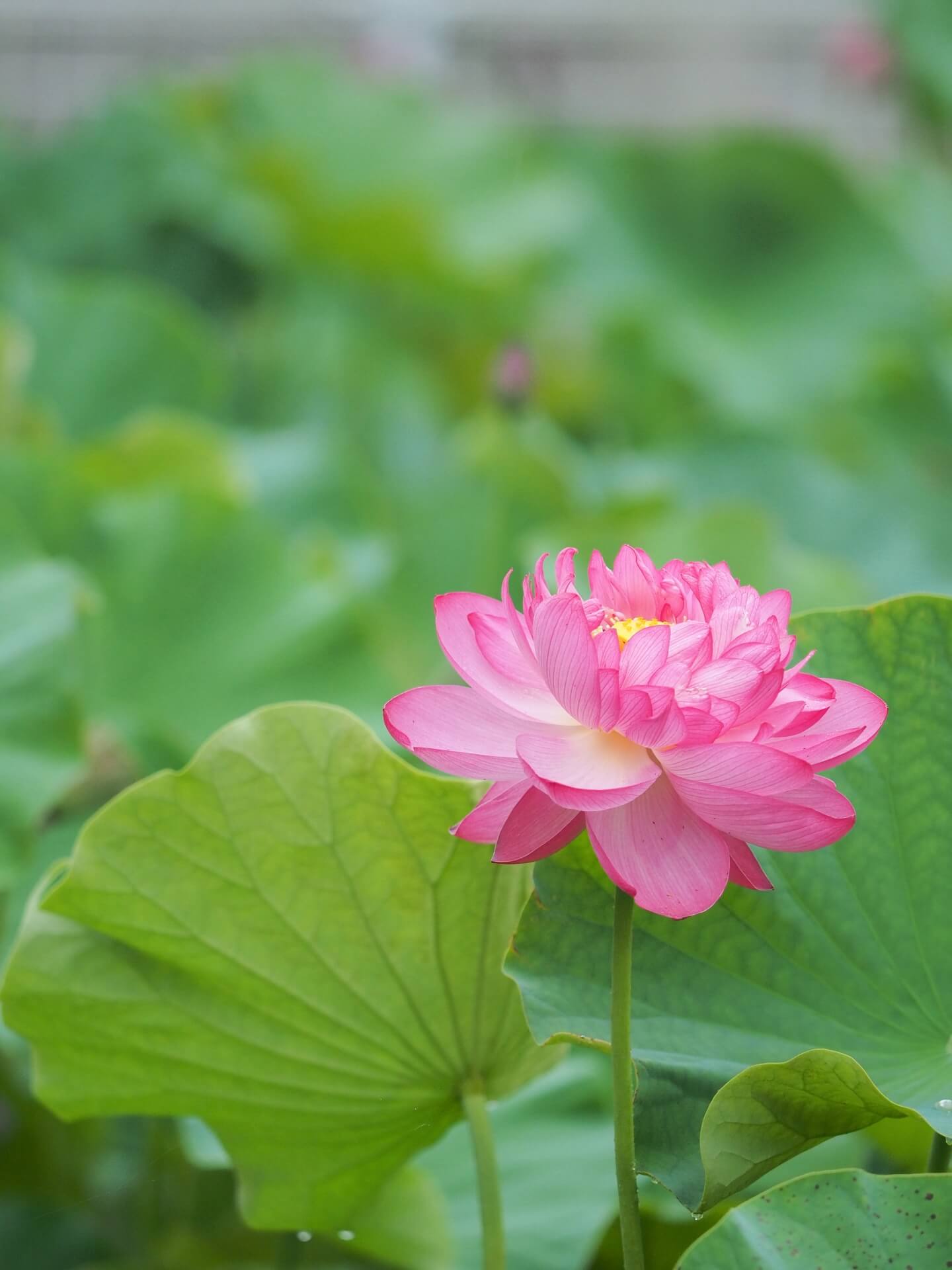
The second of Kamakura’s 'Five Great Zen Temples’, Engaku-ji was founded in 1282, only one year after the second failed invasion of Japan by the Mongols and was at that time, dedicated to the fallen warriors of the conflict. Much like Kencho-ji, Engaku-ji consists of multiple buildings including the ‘Sanmon’ (main gate), ‘Butsuden’ (main hall), ‘Shariden’ (reliquary hall) and ‘Ogane’ (bell tower) – with the final two structures designated National Treasures. The temple also includes gardens – at their most spectacular in November and December when awash with the colours of autumn – and a teahouse at which visitors can enjoy a cup of matcha and traditional sweets. Engaku-ji is open daily from 08:00 to 16:30 (or until 16:00 from December to February). Admission is JPY300. The temple is immediately accessible from Kita-Kamakura Station. To get there, take the train from Kamakura Station to Kita-Kamakura Station – 3 minutes / JPY140.
4 / TSURUGAOKA HACHIMAN-GU SHRINE / all year round
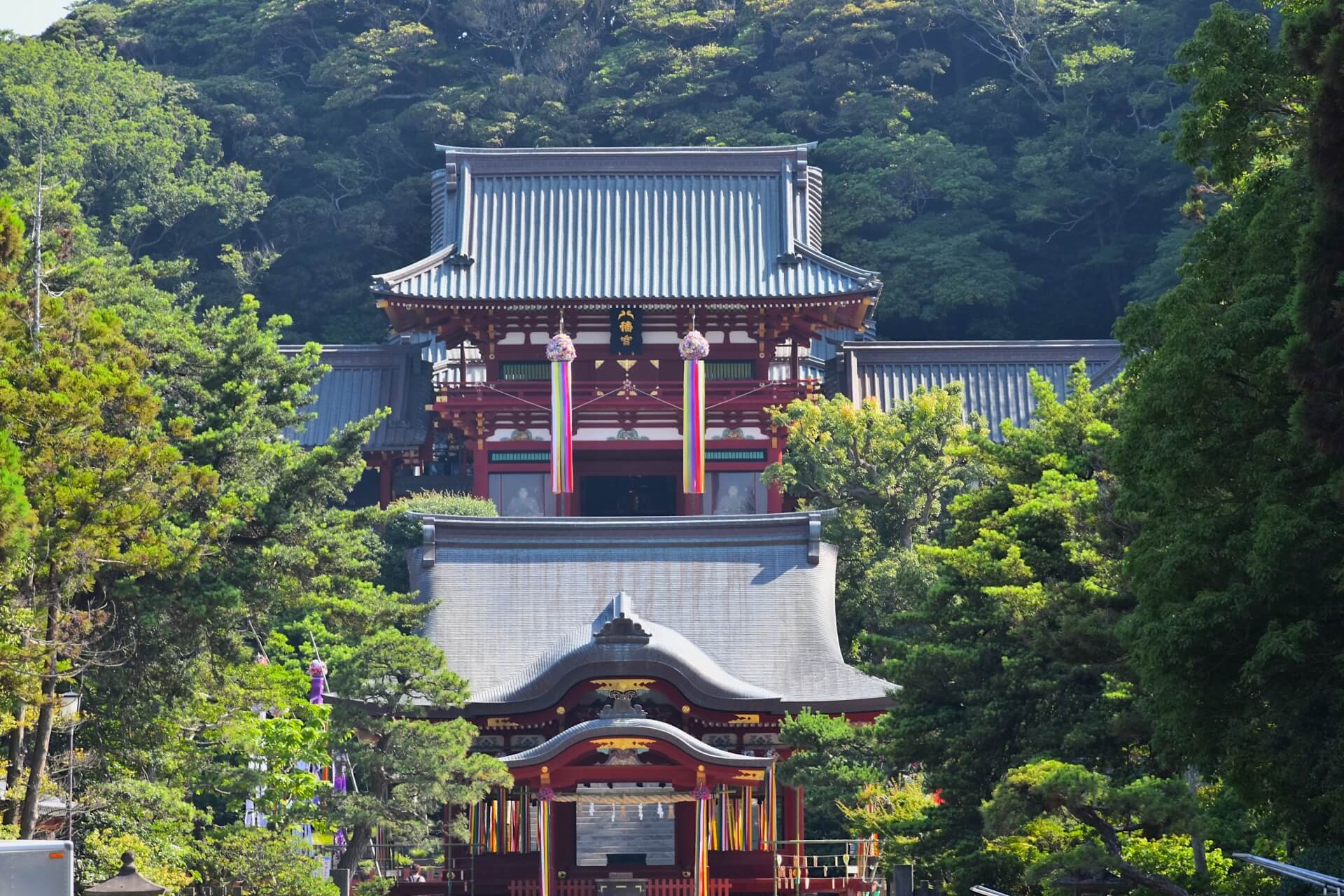
Tsurugaoka Hachiman-gu is the most important Shinto shrine in Kamakura and for many, the heart of the ancient city. Dedicated to Hachiman – the patron deity of the Minamoto clan – the original shrine was founded in 1063 before being relocated to its current location in 1180. At that time the complex was also substantially enlarged into a format similar to what exists today. The complex includes the ‘Jogu’ (main shrine) along with smaller Maruyama Inari, Shirahata, Hataage Benzaite and other shrines. The Maiden shrine is another structure of note, often the focus of festivals and weddings taking place at Tsurugaoka Hachimangu throughout the year. There is a treasure house museum that you can enjoy here, as well as a cafe and teahouse on the complex. The shrine has a beautiful garden and large pond on its grounds where you sit, relax and even feed the resident Koi Carp!
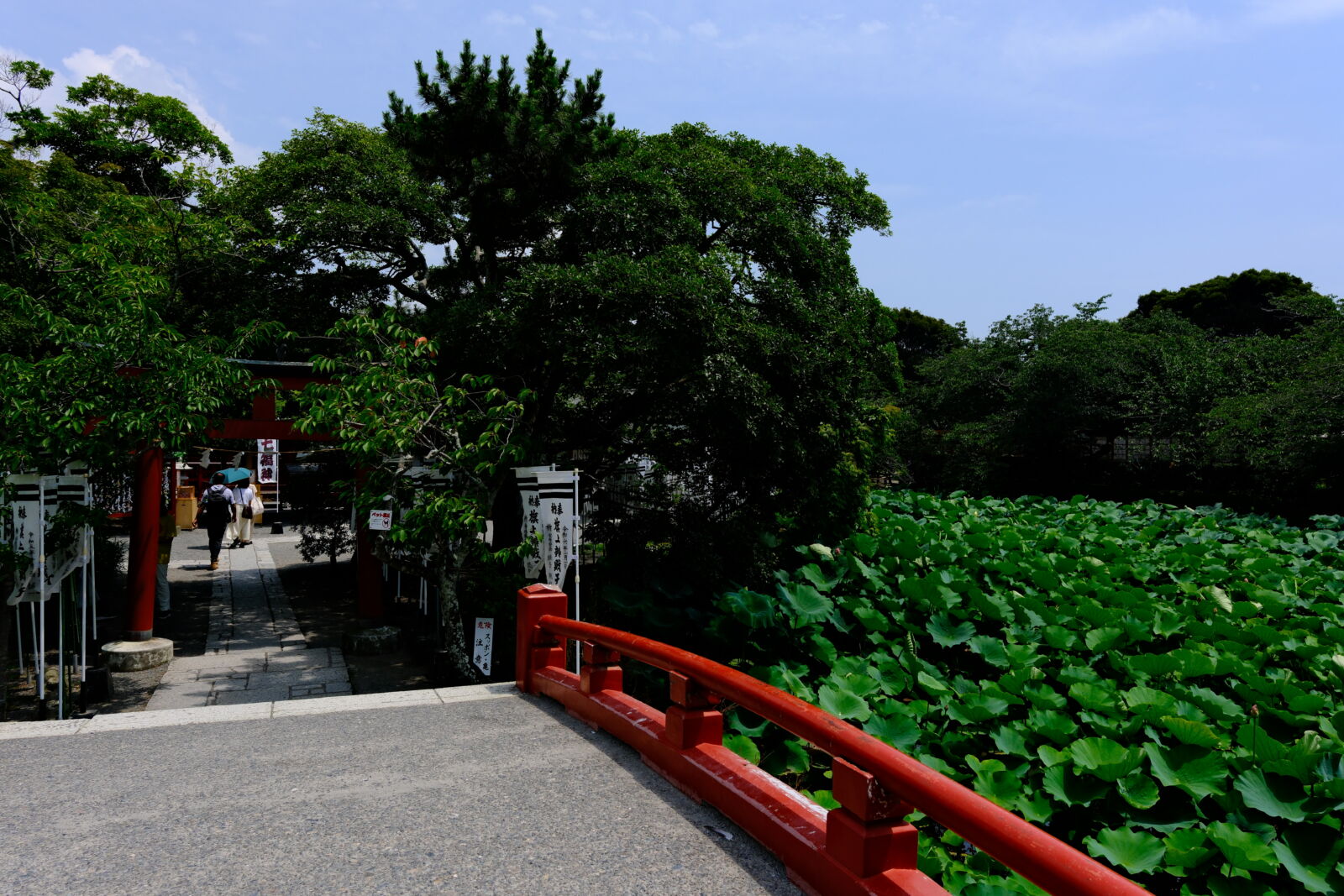
The shrine is access via a long avenue from Kamakura Station. Lined with cherry blossom trees and passing under multiple ‘torii’, the walk itself is part of the experience of the shrine at its most enjoyable during the blossoms of spring – see below for details. The shrine can be accessed daily from 05:00 to 21:00 (or from 06:00 from October to March) and remains open for 24 hours from January 1 to 3. Admission is free. To get there from Kamakura Station, the walk takes around 10 minutes to reach the entrance of the shrine complex or alternatively, it’s only a 3-minute bus ride.
5 / HOKOKU-JI TEMPLE (BAMBOO TEMPLE) / all year round
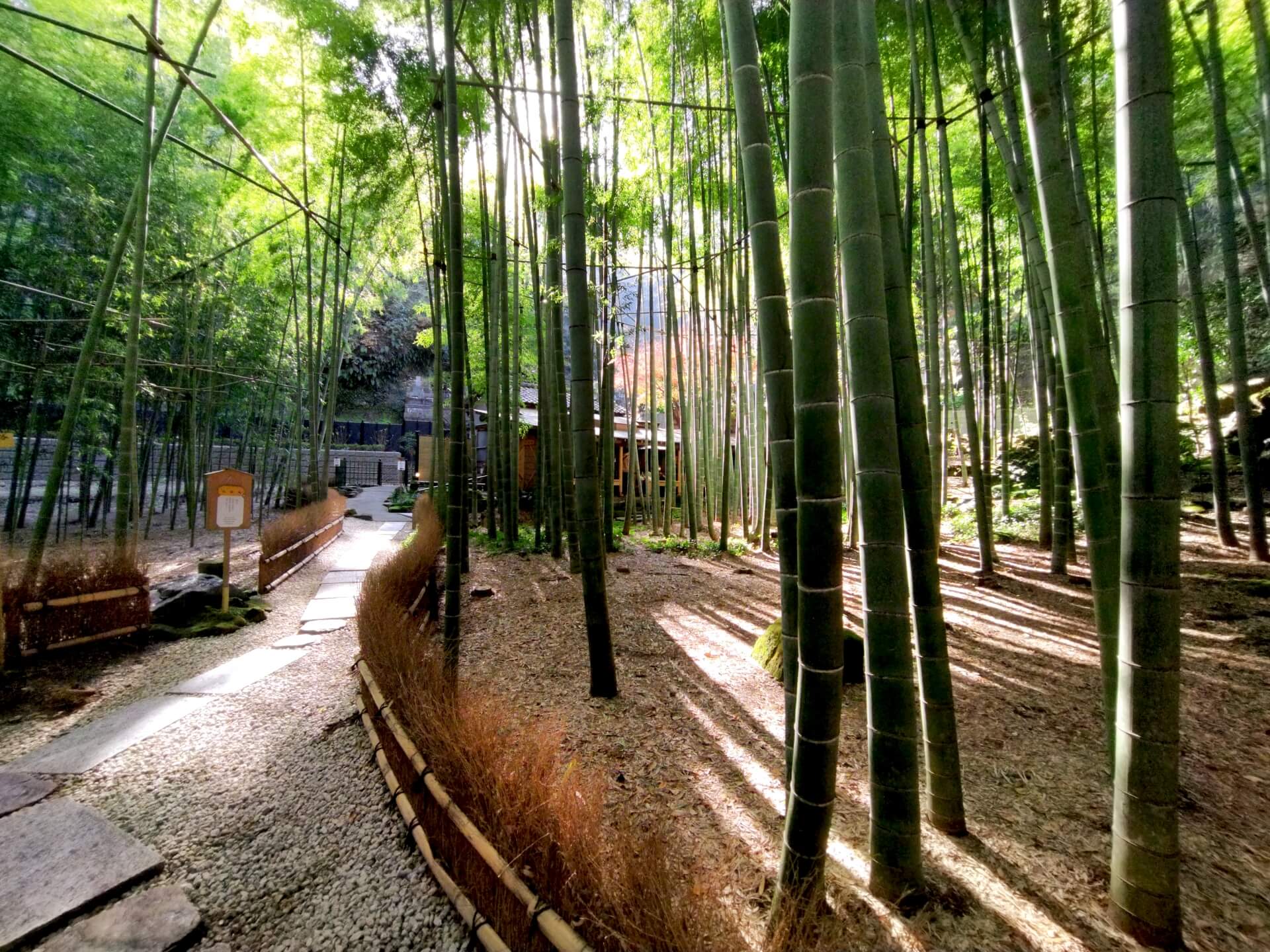
Hokoku-ji is located in the eastern hills of Kamakura and is one of the city’s most popular destination. Rather unassuming from outside, the temple is best-known for the bamboo grove located behind the temple – an area of around 2000 mature bamboo stalks dissected by pathways and hosting a teahouse from where you can enjoy the beautiful surroundings. At the teahouse, you can enjoy a matcha and rakugan sweet set. You can sit in the teahouse enjoying your refreshments as you look out to the beautiful bamboo forest. Behind the temple you’ll also find a series of small caves that are thought to hold the ashes of local lords. Often referred to as the ’Bamboo Temple’, Hokoku-ji attracts plenty of visitors and can be busy so it’s best to head there early or later in the afternoon. The temple is open daily (closed from Dec.29 to Jan.3) from 09:00 to 16:00. Admission is JPY 400. The tea and sweet set is JPY 500. To get there, take buses No.23, No.24 or No.36 to the Jomyo-ji Bus Stop – 10 minutes / JPY200 – or alternatively, it’s a 30 to 40 minute walk to reach the temple.
6 / MEGETSU-IN TEMPLE (HYDRANGEA TEMPLE) / all year round
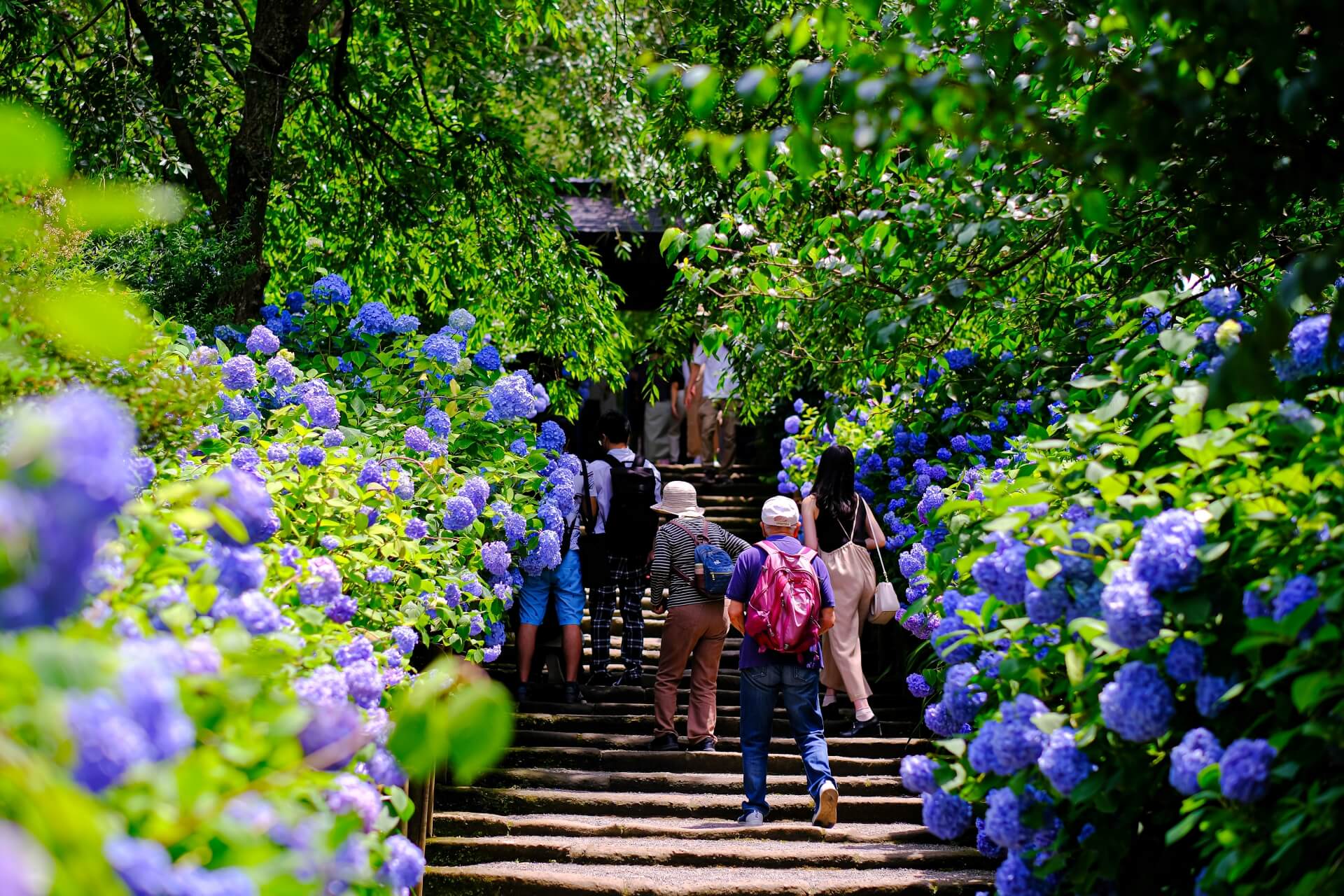
Another of Kamakura’s beautiful Zen temples – but not one of the 'Five Great Zen Temples’ – Meigetsu-in is commonly referred to the as ‘Ajisaidera' or the ‘Hydrangea Temple’ due to the large number of hydrangeas that surround the temple and bloom in June. The temple is equally as famous for the distinctive circular window of its main hall, which looks onto an inner garden that’s at its best during November and December when the autumn colours take hold and allow for truly beautiful photographs.
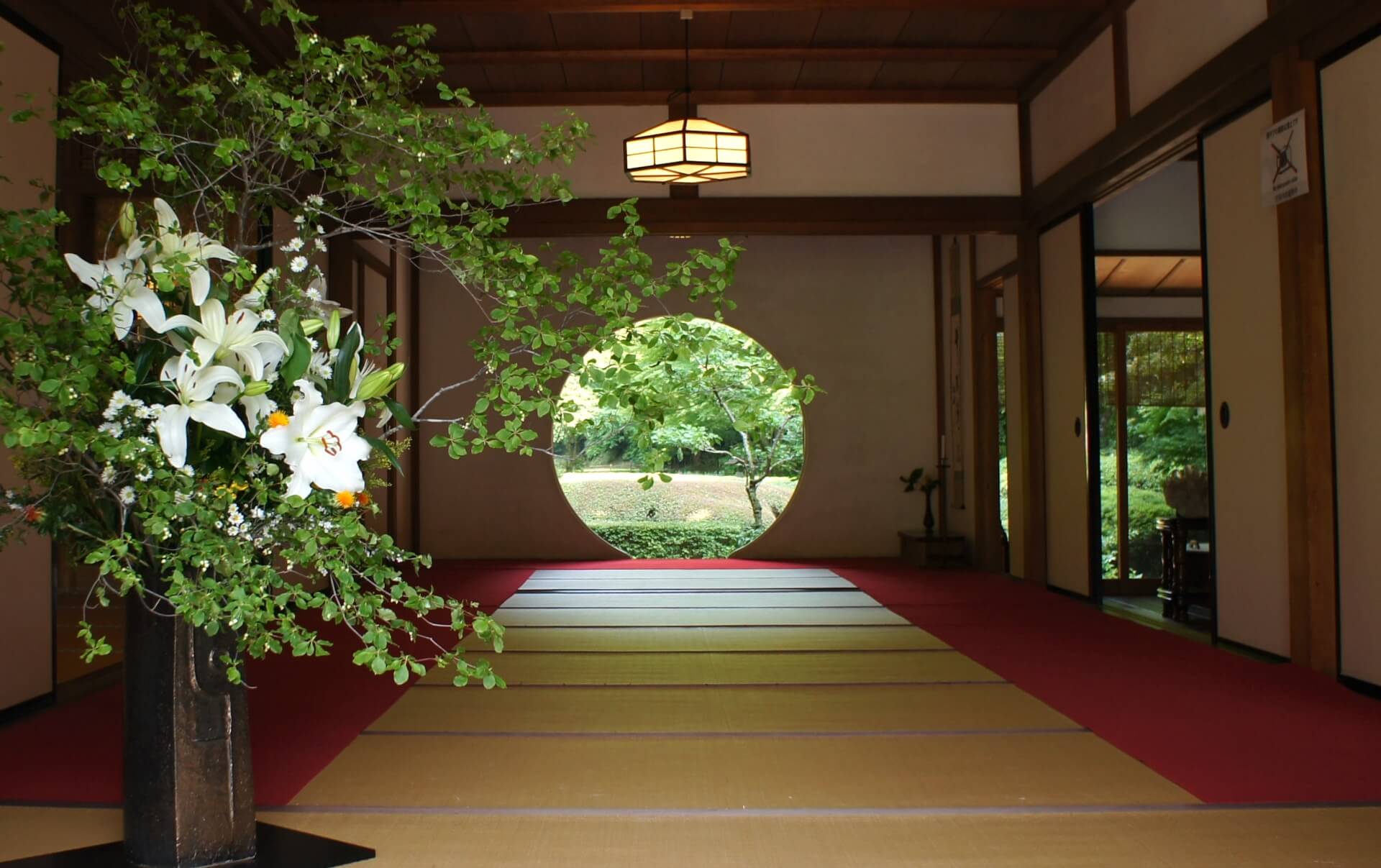
Megetsu-in is open daily from 09:00 to 16:00 with extended hours in June, from 083:0 to 17:00. Admission is JPY500. To get there, take the train from Kamakura Station to Kita-Kamakura Station – 3 minutes / JPY140 – from where it’s a 10 minute walk.
7 / JOMYO-JI TEMPLE / all year round
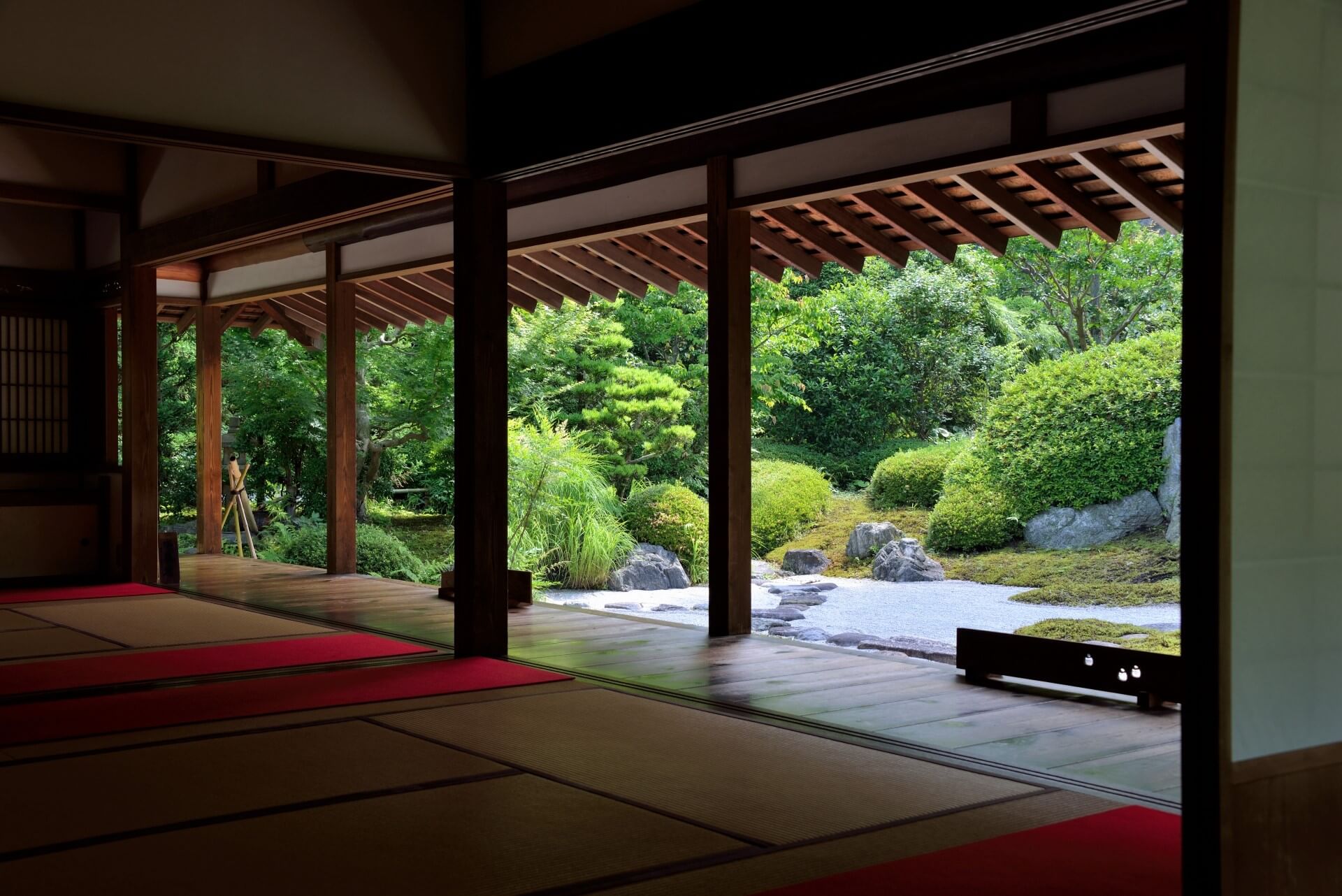
Jomyo-ji is the fifth of Kamakura’s 'Five Great Zen Temples’, located in the eastern area of the city. The temple is best-known for its beautiful garden and teahouse that affords a tranquil spot from where to enjoy the tranquillity of that garden. The teahouse serve 'matcha', ‘rakugan’ (a traditional pressed sweet) and other treats – an ideal location to perhaps end your temple exploration. Jomyo-ji is open daily from 09:00 to 16:30. Admission is JPY100. To get there, take buses No.23, No.24 or No.36 to the Jomyo-ji Bus Stop – 10 minutes / JPY200 – or alternatively, it’s a 30 to 40 minute walk.
8 / HASEDERA TEMPLE / all year round
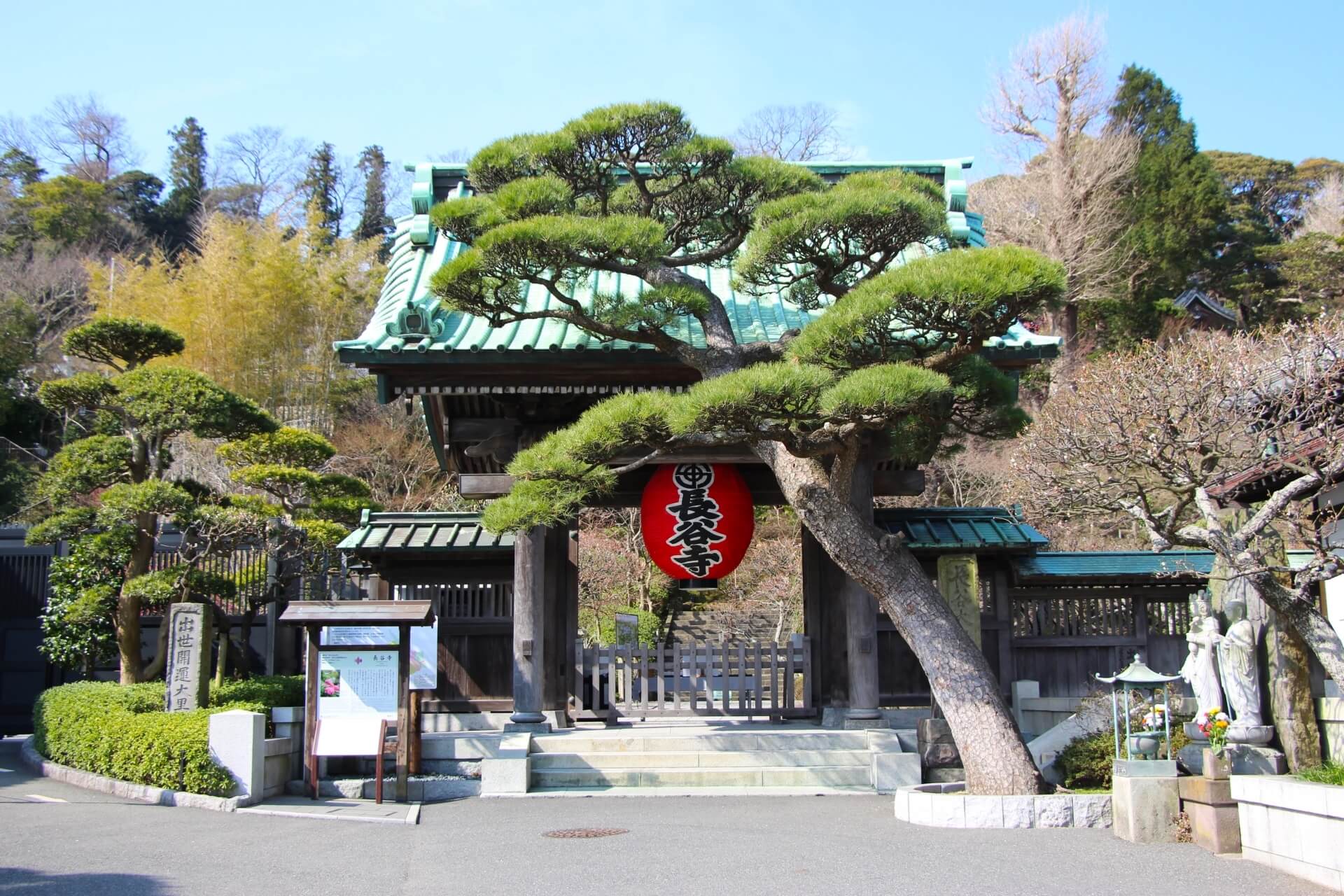
Hasedera is another of Kamakura’s most popular tours, famous for its eleven-headed Kannon statue. Standing almost 10 metres in height, it is one of the largest wooden statues in Japan and the focal point of the main temple. The temple complex is built on two levels with the elevated position of the main hall affording great views of Kamakura and the nearby sea and the ‘Benten-Kutsu Cave’ features a winding tunnel with Buddhist icons carved into the rock. Outside the temple, an attractive garden surrounds a ‘koi’-filled pond while the months of June and July see its many hydrangeas bloom and attract lots of visitors. The temple is open daily from 08:00 to 17:30 (or until 17:00 from October to February) with last entry 30 minutes before closing. Admission is JPY400. To get there, take the train from Kamakura Station to Hase Station – 4 minutes / JPY200 – from where it’s only a 5 minute walk.
9 / ZENIARAI BENTEN SHRINE / all year round
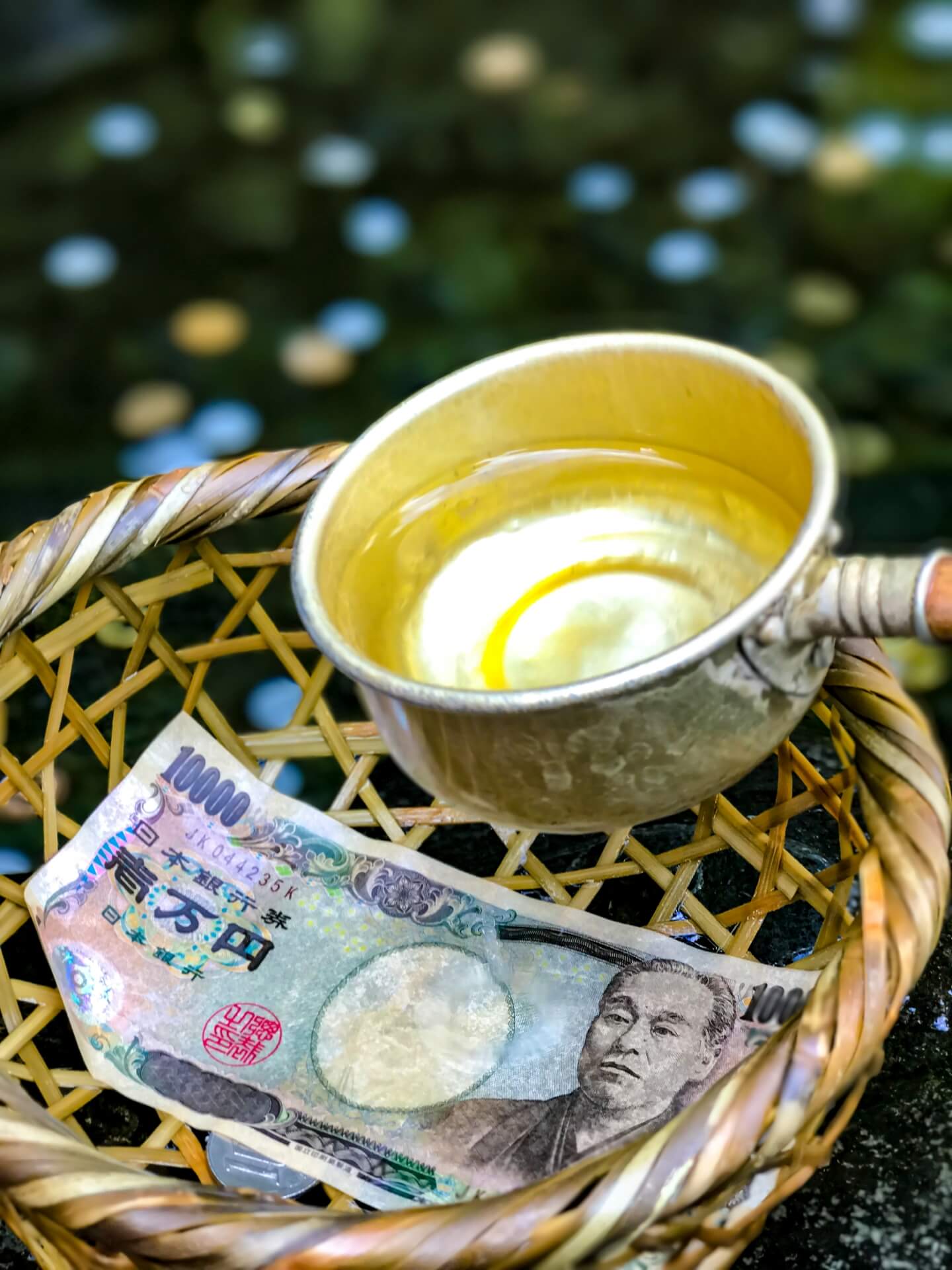
Located in western Kamakura, Zeniarai Benten Shrine brings redefines the otherwise ill-favoured practice of money laundering through the tradition of washing money in its natural spring. Money washed in the water is said to double if not multiply by many times, making this otherwise anonymous shrine one of Kamakura’s most popular destinations. The shrine is however also worth visiting for the insight it provides into the historic fusion of Shintoism and Buddhism in Japan in its dedication to a Shinto deity called ‘Ugafukujin’ and the Buddhist goddess ‘Benzaiten’. Though the two religions were officially separated during the Meiji Restoration, Zeniarai Benten Shrine retains its traditional character in merging both belief systems. The shrine is open daily from 08:00 to 16:30 and admission is free (but obviously, make sure to bring some money with you). To get there, it’s easiest to walk from Kamakura Station – taking around 25 to 30 minutes along the Daibutsu Hiking Course.
10 / KAMAKURA EBISU FESTIVAL / January
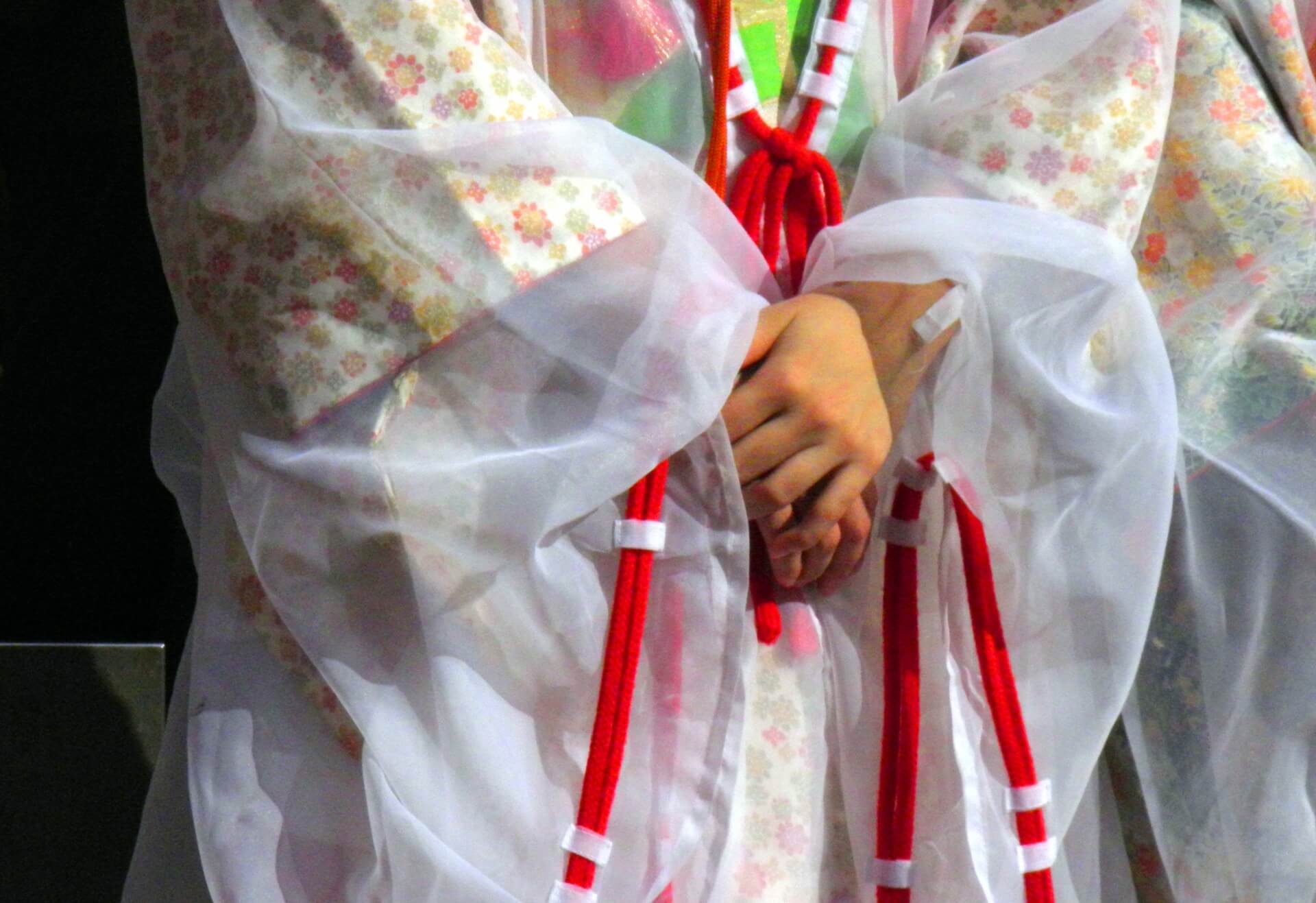
Taking place from January 1st to 3rd each year, ‘Kamakura Ebisu’ is a celebration of Ebisu, god of commerce held at Hongaku-ji Temple. Ebisu – one of Japan’s seven lucky gods – was designated as Kamakura’s guardian by the shogun Minamoto no Yoritomo, and the festival see young women dress in traditional costumes and see amulets made of bamboo and sake. Taking place over the New Year period, the festival attracts large crowds who come to wish for a good year to come and is something of a must-do should you be in the Kamakura area at that time.
11 / AUTUMN COLOURS / November to December
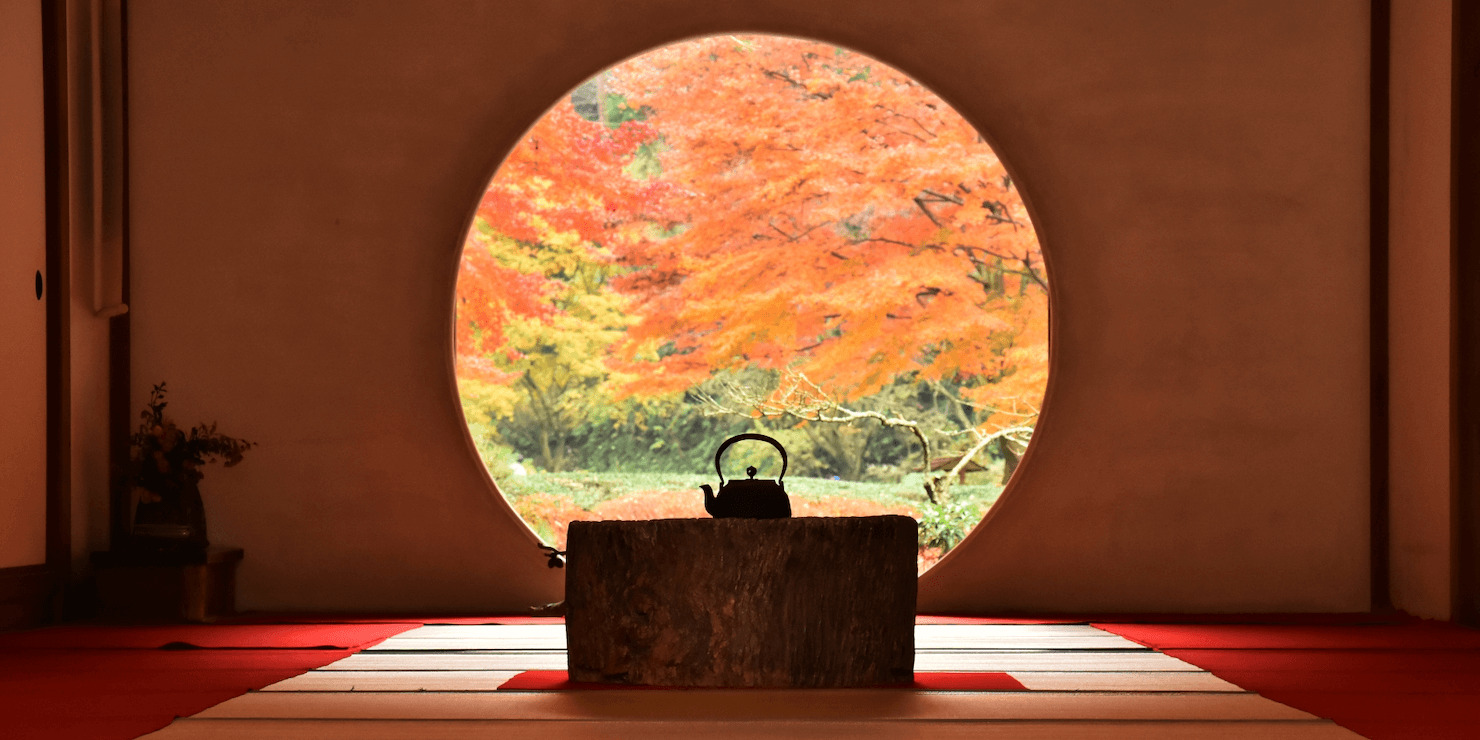
Autumn is another spectacular time of year to visit Kamakura, as the changing leaves rival the beauty of the blossoms of spring and offer visitors fantastic photo opportunities. Temples including Kotoku-in, Hokoku-ji and Hasedera are especially beautiful with Meigetsu-in – pictured above – being particularly popular for its circular window looking onto the surrounding garden.
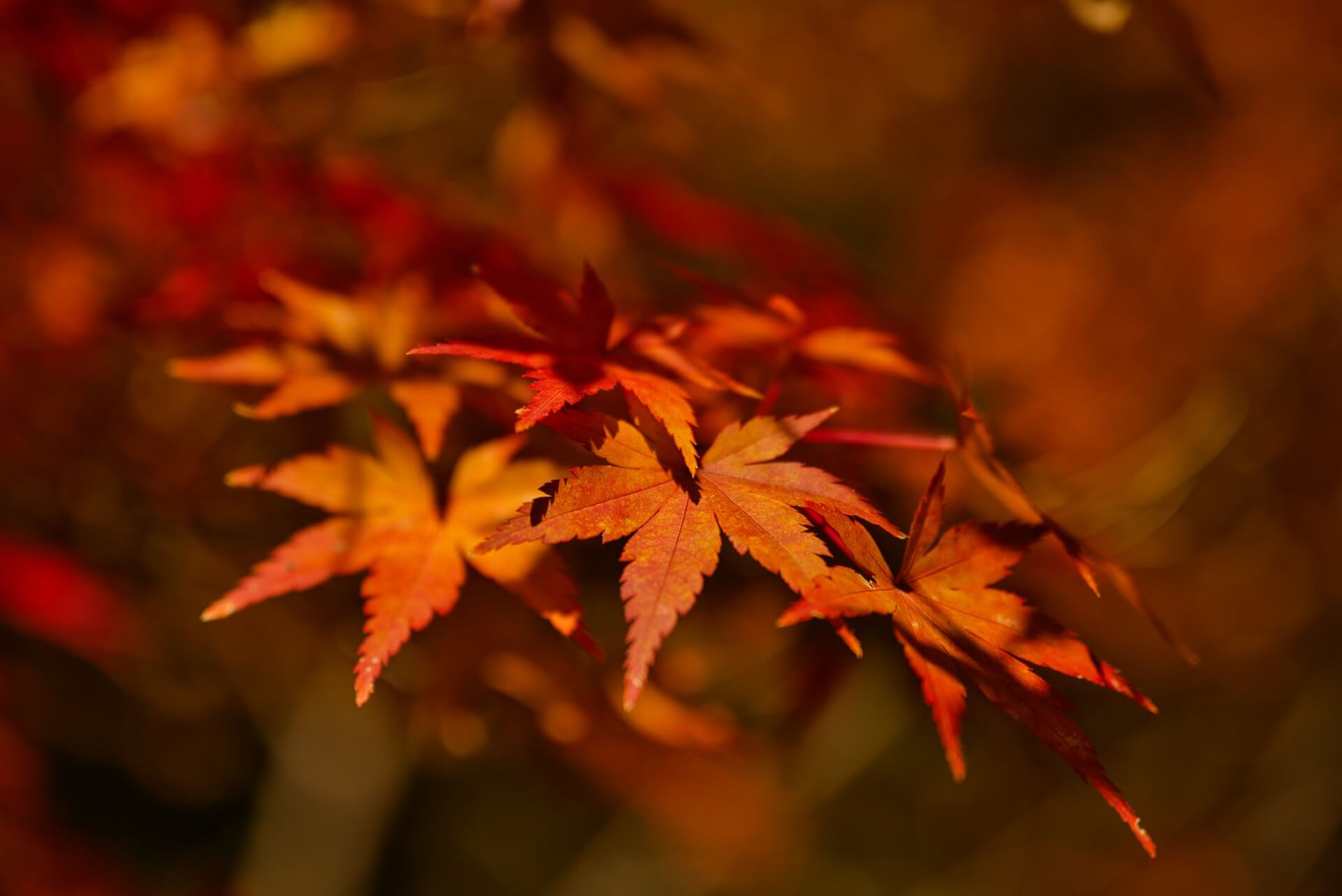
Tsurugaoka Hachimangu Shrine and Genjiyama Park are also popular spots for enjoying the leaves which are at their best a little later in Kamakura – typically from November to December.
12 / WALKING BETWEEN THE TEMPLES & SHRINES / best: April to November
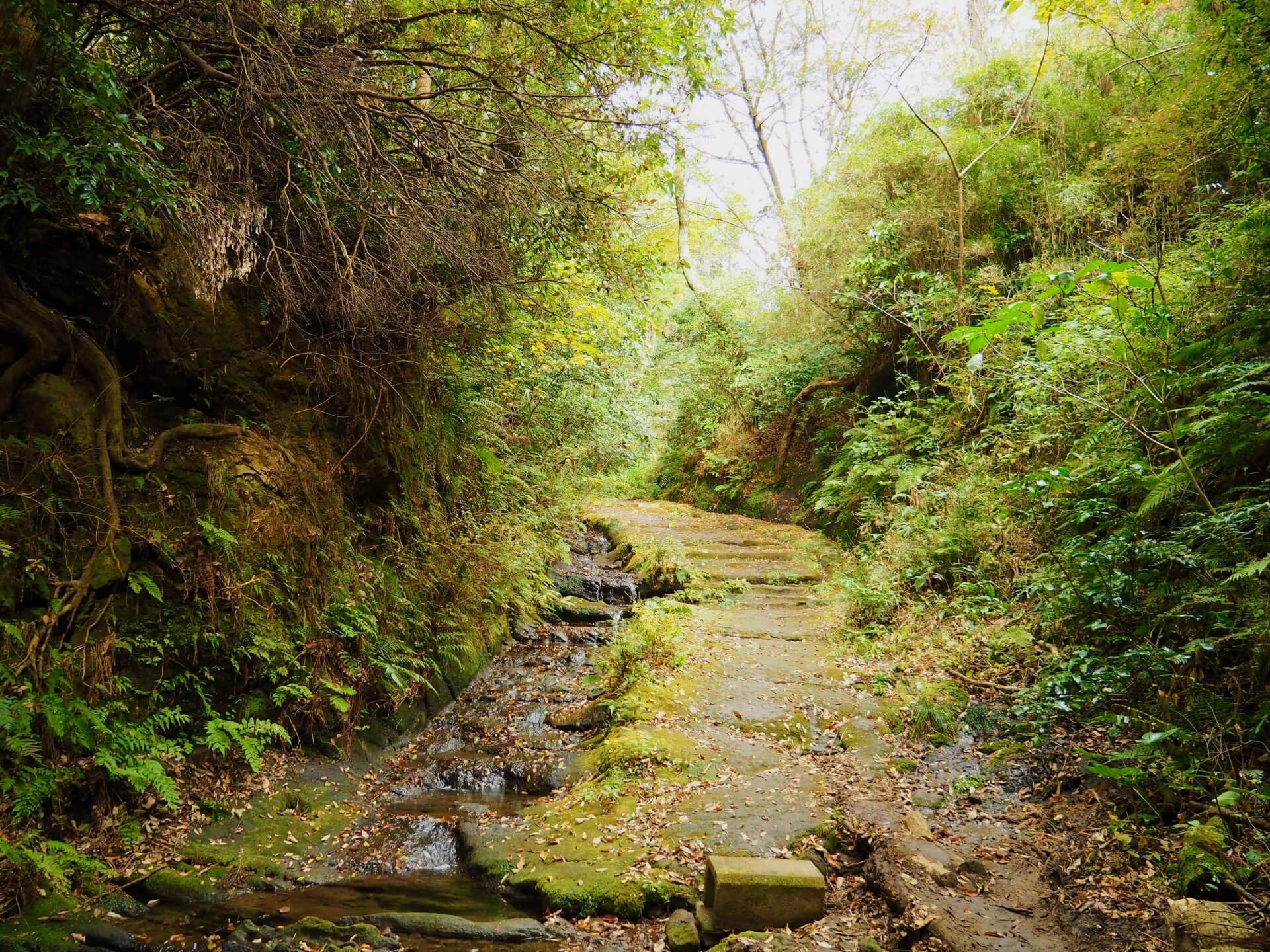
One of the best ways to enjoy Kamakura including its many temples and shrines is to walk between them on the trails that lead through the forests and hills that surround the city. Trails are suitable for anyone of reasonable fitness however can be narrow and a little steep in sections. Ranging from 30 to 90 minutes and transporting you into tranquil corners of Kamakura with few other people, courses lead into the western, northern and eastern hills called the ‘Daibutsu Hiking Course’, ‘Tenen Hiking Course’ and ‘Gionyama Hiking Course’ respectively. Trails can be accessed any time of year but are most enjoyable in the warmer months from April to November, with July and August being an especially good time to escape the summer heat by heading into the forest.
13 / YUIGAHAMA & ZAIMOKUZA BEACHES / best: June to September
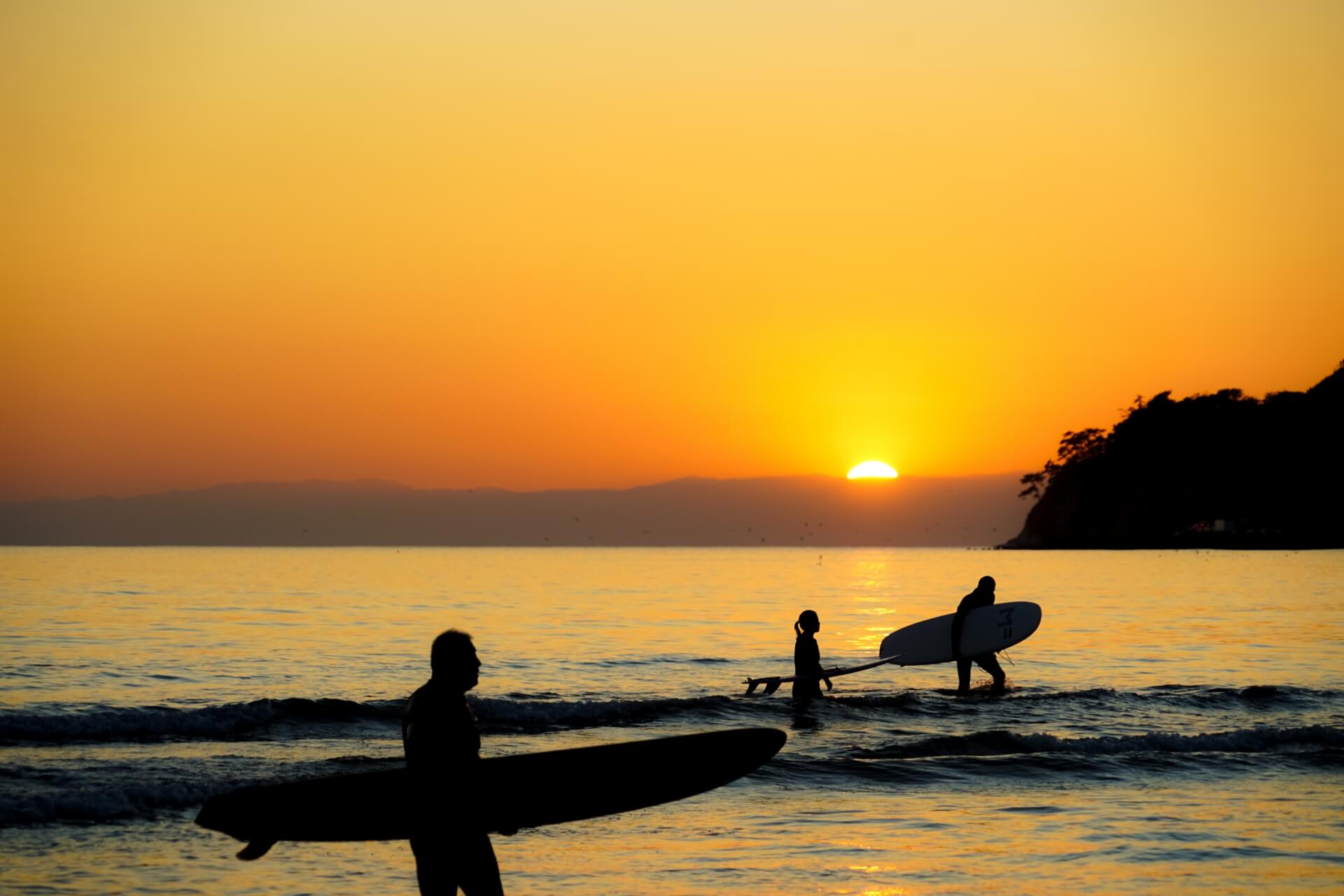
Though it may not be a big drawcard for international visitors, the beaches of Kamakura are very popular with Japanese and one of the main reasons many people travel there in the warmer months of the year. Of those beaches, Yuigahama and Zaimokuza are the most popular, drawing thousands of visitors in summer. Spanning a combined distance of around 1 kilometre, the beaches are lined with huts selling food and drinks and rental shops with all the gear you might need to enjoy a day at the beach. At their best during the summer months – late-June to early-September – expect the beaches to be extremely busy through July and August. While this won’t appeal to everyone, the ease of access to the beaches – around 5 minutes walk from Yuigahama Station or 20 minutes walk from Kamakura Station – makes them a pleasant area to stroll and on a clear day, enjoy views of Mount Fuji at anytime of year.
14 / KOMACHI-DORI STREET / all year round
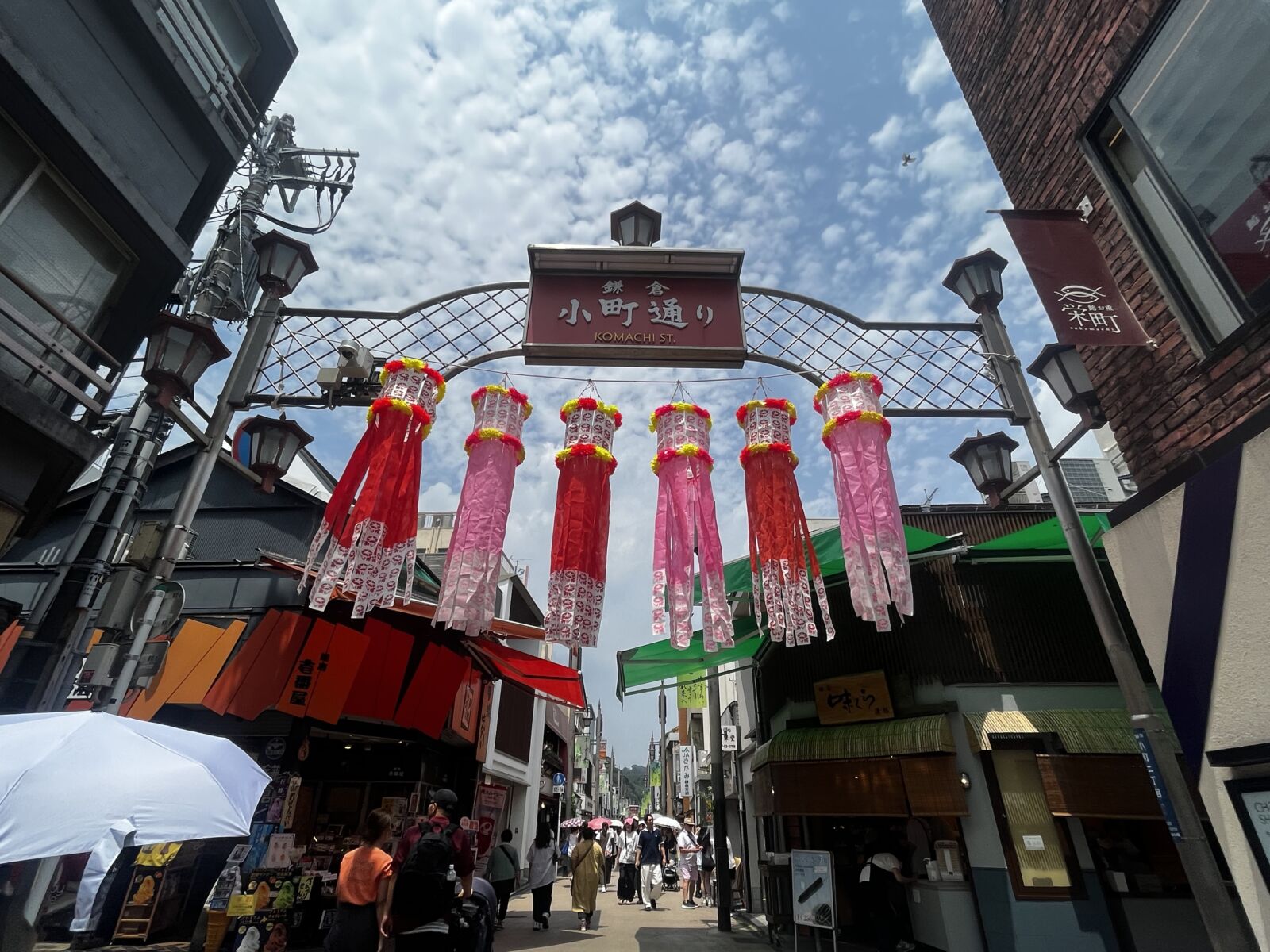
Komachi-dori is the main shopping street of central Kamakura. It is a long street stretching 350 meters, and is lined with many cafes, restaurants, street food vendors, souvenir and craft shops! We highly recommend stopping off here for your lunch break in Kamakura to sample delicious food and snacks, as well as buying some local crafts.
15 / RIDING THE ’ENODEN’ TRAIN / all year round
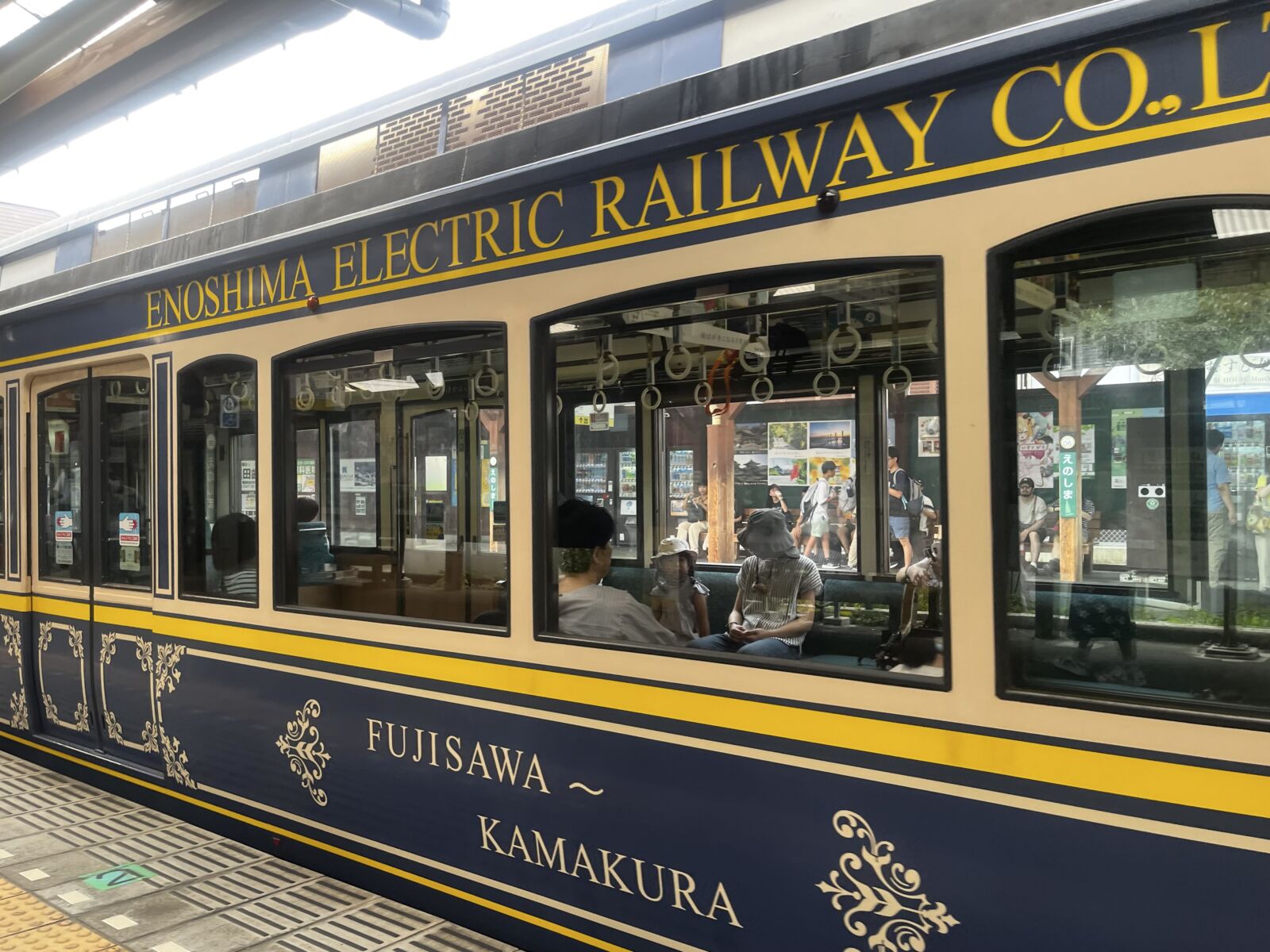
Whether if you’re a train enthusiast or not, a trip to Kamakura and Enoshima would not be complete without a ride on the local ’Enoden’ train! ’Eno’ is short for Enoshima, and ’Den’ is short for Densha (the Japanese for train). This train consists of a few small cars with the exterior and interior often styled in a more retro design. As you ride this train from Kamakura station to Enoshima, you can enjoy views of the ocean and beach.
16 / VIEWS OF MOUNT FUJI / all year round
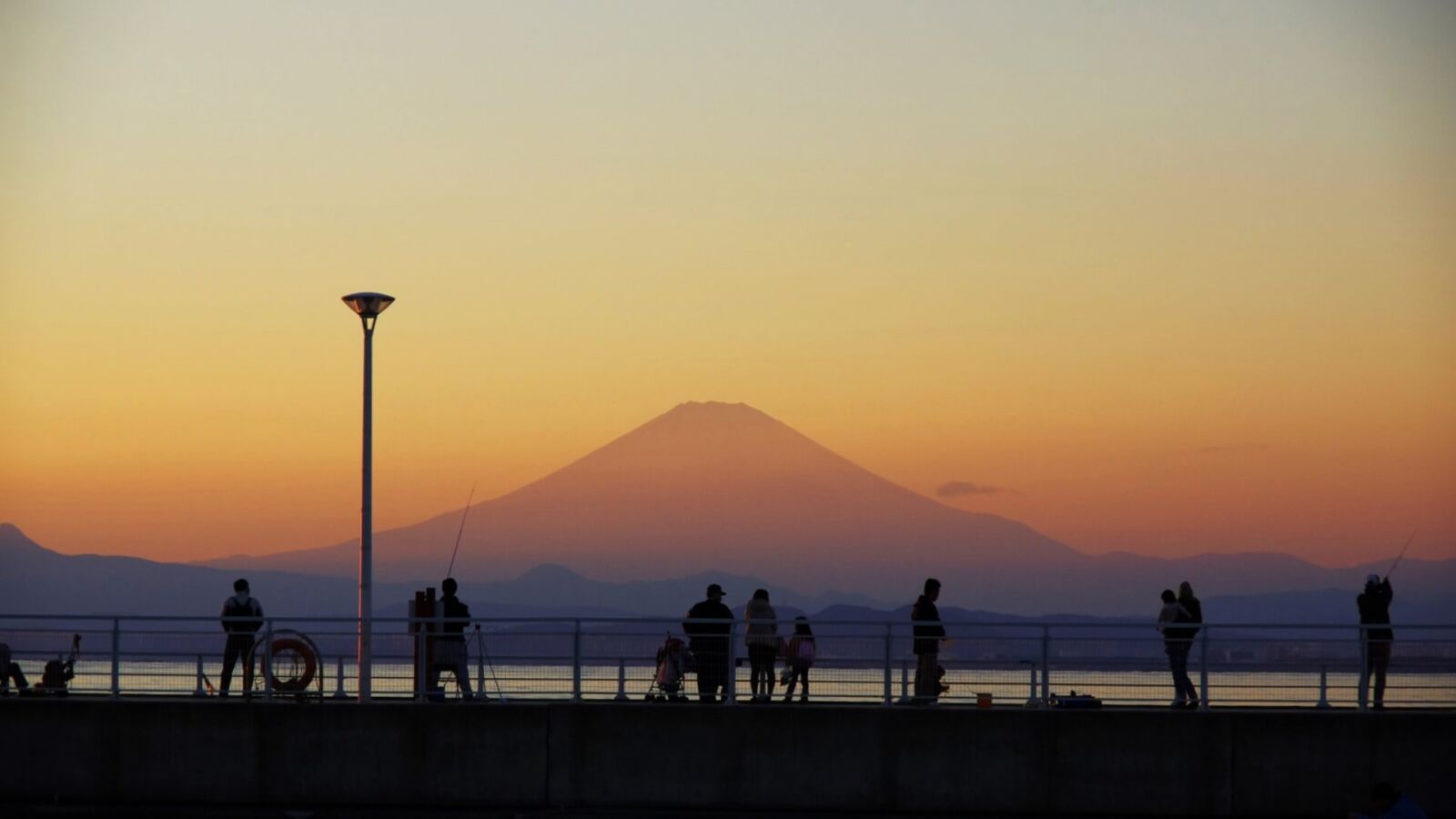
Visitors to Kamakura and nearby Enoshima – see below for details – can enjoy fantastic views of Mount Fuji. Lying across the bay in Shizuoka and Yamanashi Prefectures, Fuji’s immense size makes it visible from Kamakura on clear days – a constant and highly-photogenic presence that can be enjoyed at anytime of year. One of the best spots to see Mount Fuji is walking across to, or walking back from Enoshima island. If you’re lucky, you can catch the sunset and take a great photo of Mount Fuji! For more information about Fuji including the meaning reasons to visit, see our ’40 Things to Do Around Mount Fuji & Where to Stay’ page.
17 / ENOSHIMA AQUARIUM / all year round
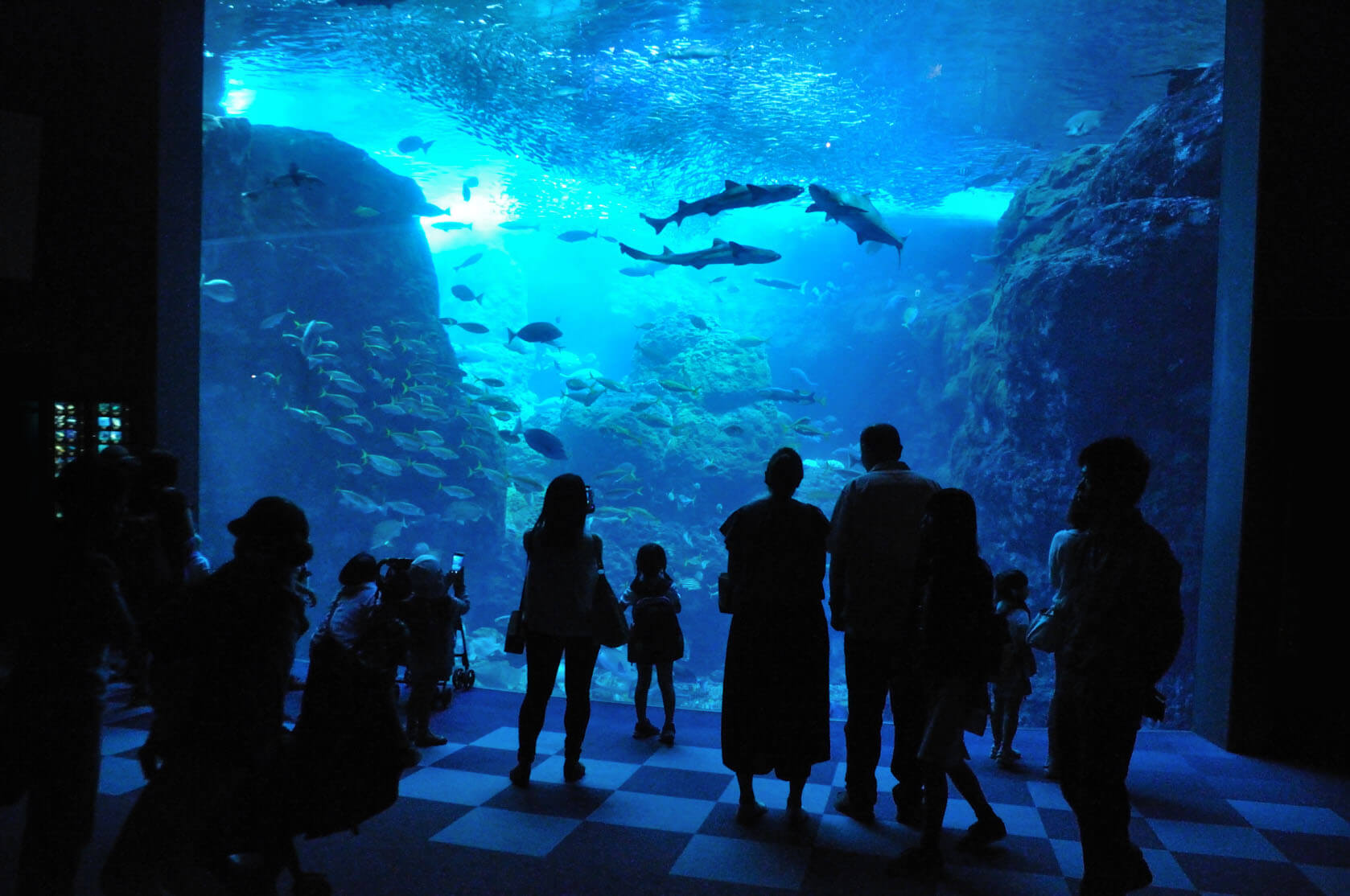
Enoshima Aquarium offers a change of pace from the temples and shrines of Kamakura – a destination well-suited to families and a good destination in its own right. Split into twelve themed zones, the aquarium profiles the local sealife of Sagami Bay along with the nearby Pacific Ocean, the deep sea and more. The two-storey tall ‘Sagami Bay’ tank is a highlight of the aquarium, holding thousands of fish in a spectacular display of the life thriving in the nearby bay. Open daily, hours vary from month-to-month with opening timed for 08:00 to 10:00 and closing between 17:00 to 18:00. Admission is: adults JPY2500 / high school students JPY1700 / junior high & primary school students JPY1200 / children aged 3 and over JPY800. To get there, take the train from Kamakura Station to Katase-Enoshima Station – 30 minutes / JPY360 – from where its under 5 minutes walk to the aquarium.
18 / VISIT ENOSHIMA / all year round
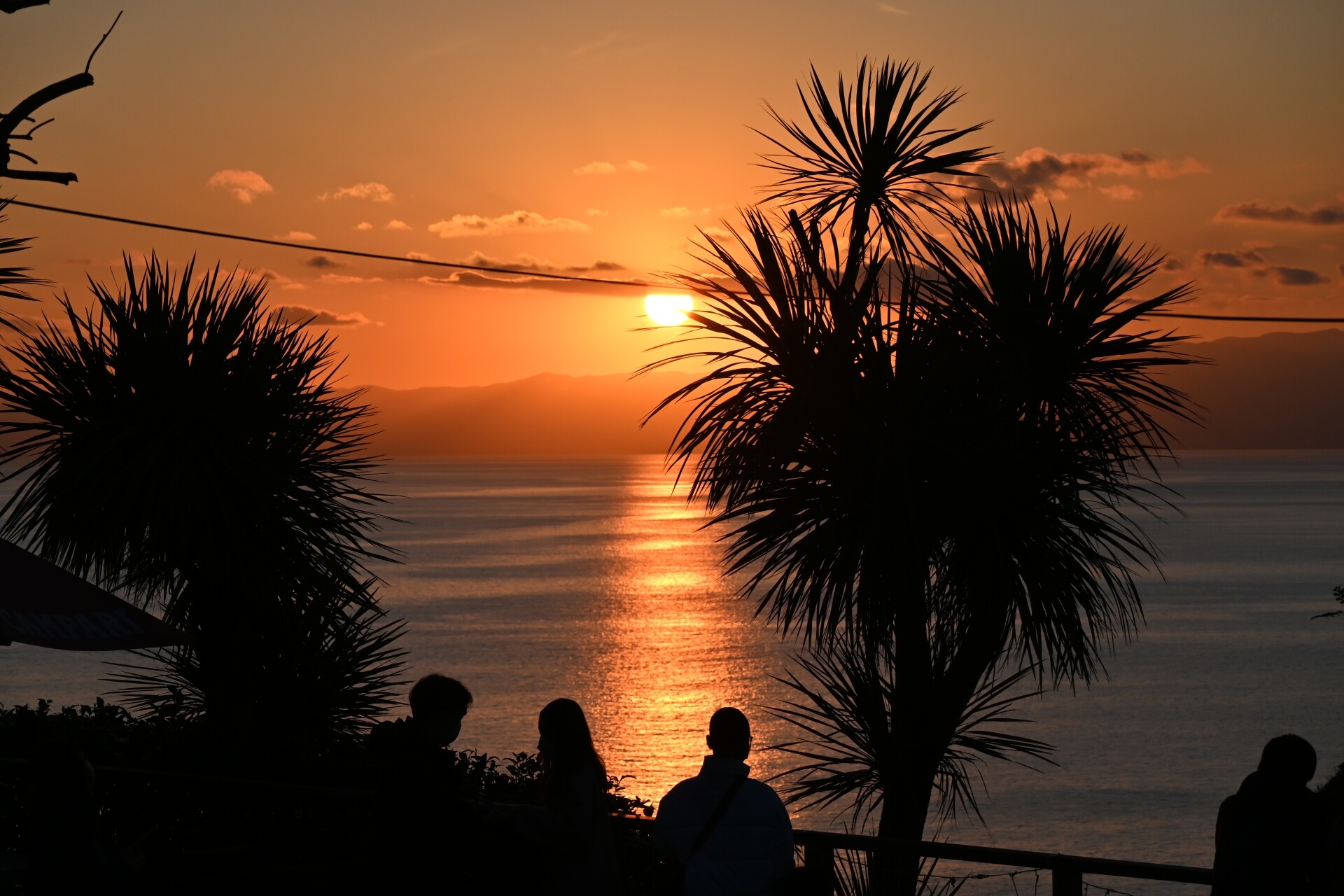
The island of Enoshima lies a short distance from Kamakura in Sagami Bay. Connected to mainland by a bridge, it is easy to access and offers a variety of attractions including beaches, coastal and forest walking trails, caves and parks, hot springs and observation points. Enoshima is another spot that on clear days affords great views of Mount Fuji. The Enoshima area can be access via multiple stations including Enoshima, Enoshima-Katase and Fujisawa from where buses run to Enoshima Island.
19 / VISIT HAKONE / all year round
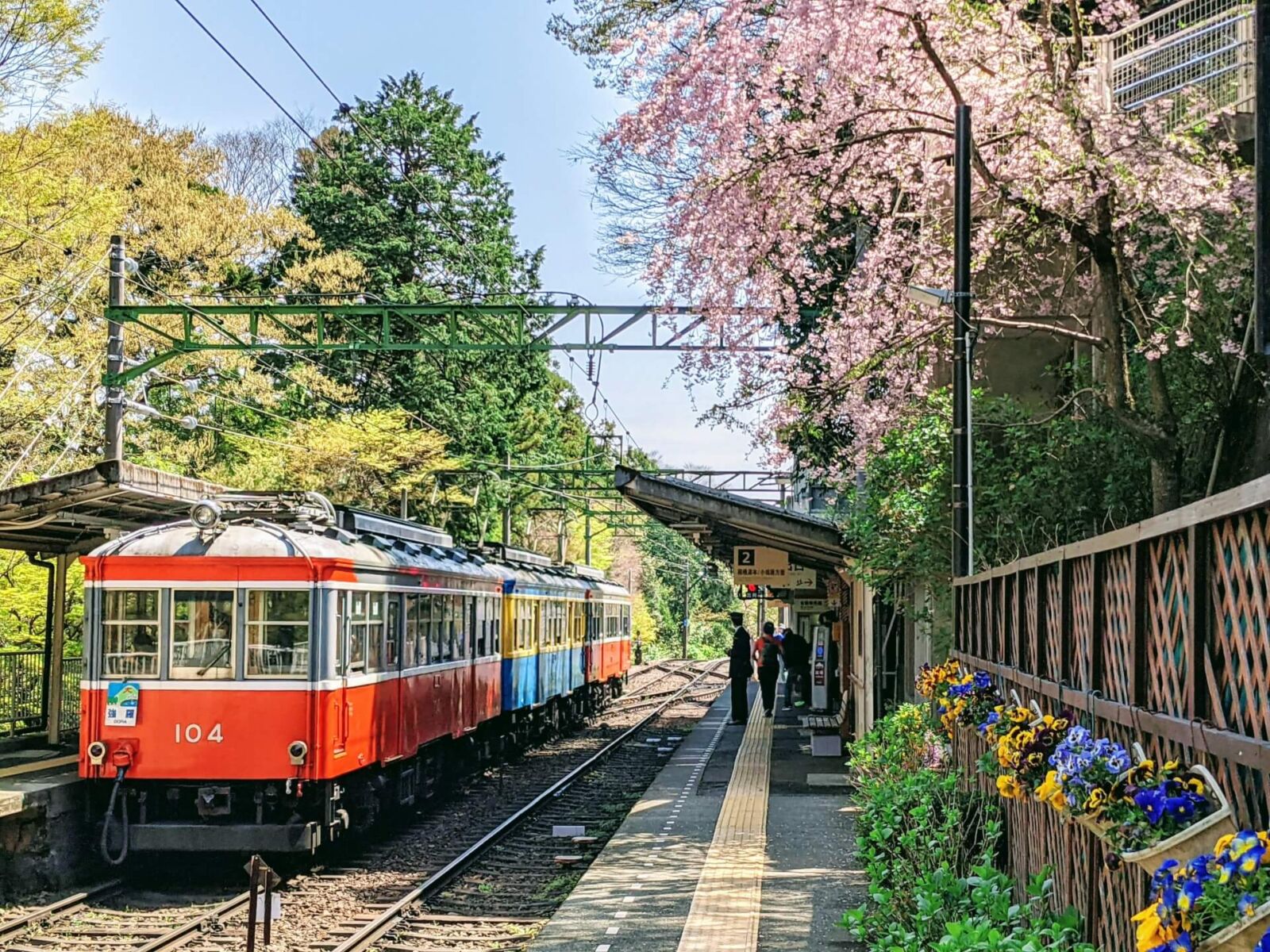
Sitting around 1.5 hours to the west of Kamakura, Hakone is one of Japan’s most famous and popular ‘onsen’ (natural hot spring) towns. Home to a huge range of accommodation, great restaurants, museum, galleries and outdoor attractions, Hakone is within easy reach of the capital and offers visitors some of the best views of Mount Fuji to the west. Our ’15 Things To Do Around Hakone & Where To Stay’ page has lots of great tips and suggestions of what’s on offer on including the best areas to stay.
If you would like the chance to explore some of Hakone during your trip to Japan, join our ’1 Day Tour : Mount Fuji and Hakone’ tour. For more information, or to book a tour, click on the banner.
20 / VISIT YOKOHAMA / all year round
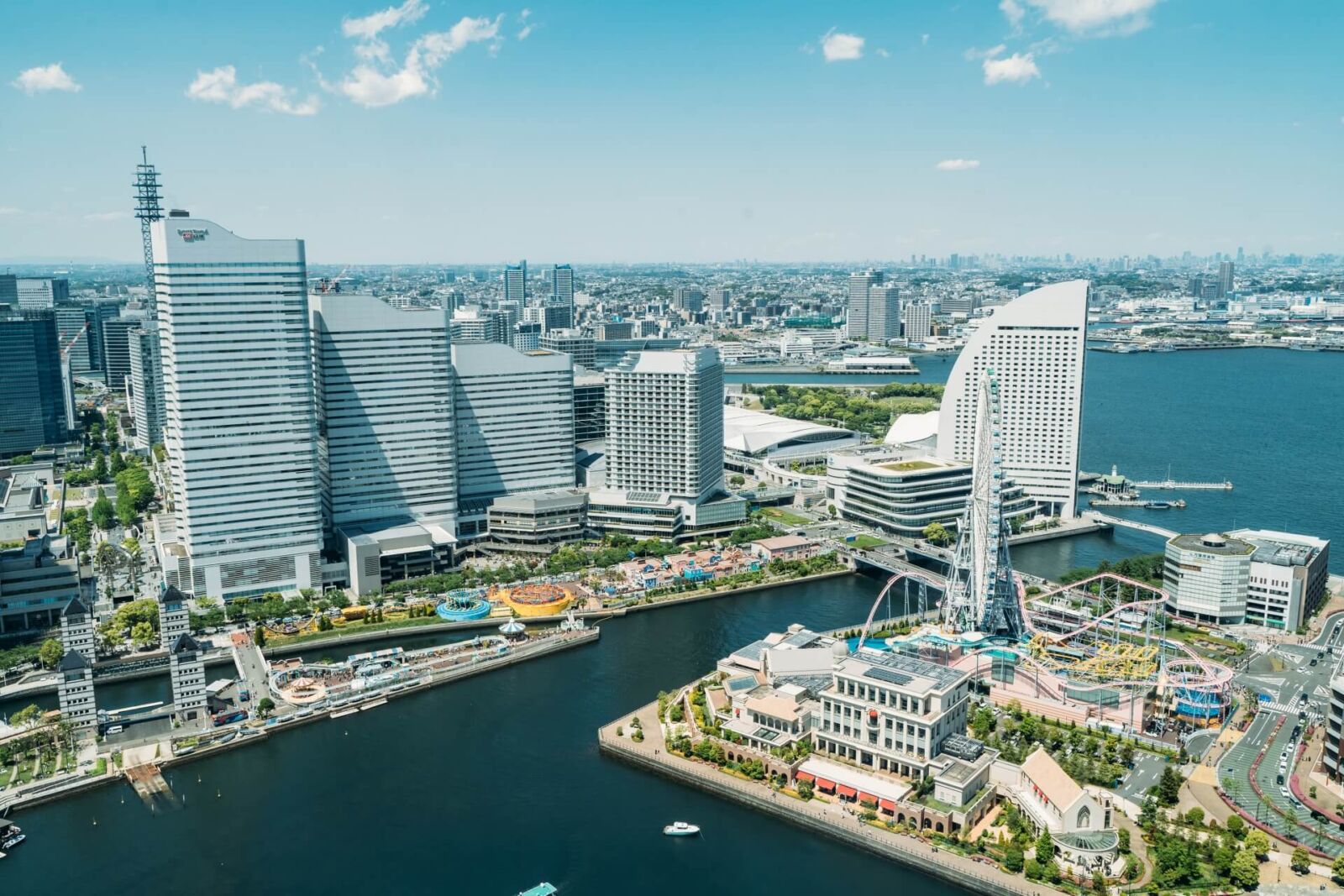
Under 30 minutes to the north of Kamakura, Yokohama is Japan’s second largest city – a city known for its enticing mix of modern and historic attractions. From its modern city centre and its vibrant Chinatown district – the largest Chinatown of any city in Japan – to eclectic museums, gardens and zoo, Yokohama has lots to offer and all within easy reach of Tokyo. Our ’20 Things to Do Around Yokohama & Where to Stay’ page has our suggestions of the best things of offer including links through to accommodation listings.
BEST PLACES TO STAY WHEN VISITING KAMAKURA
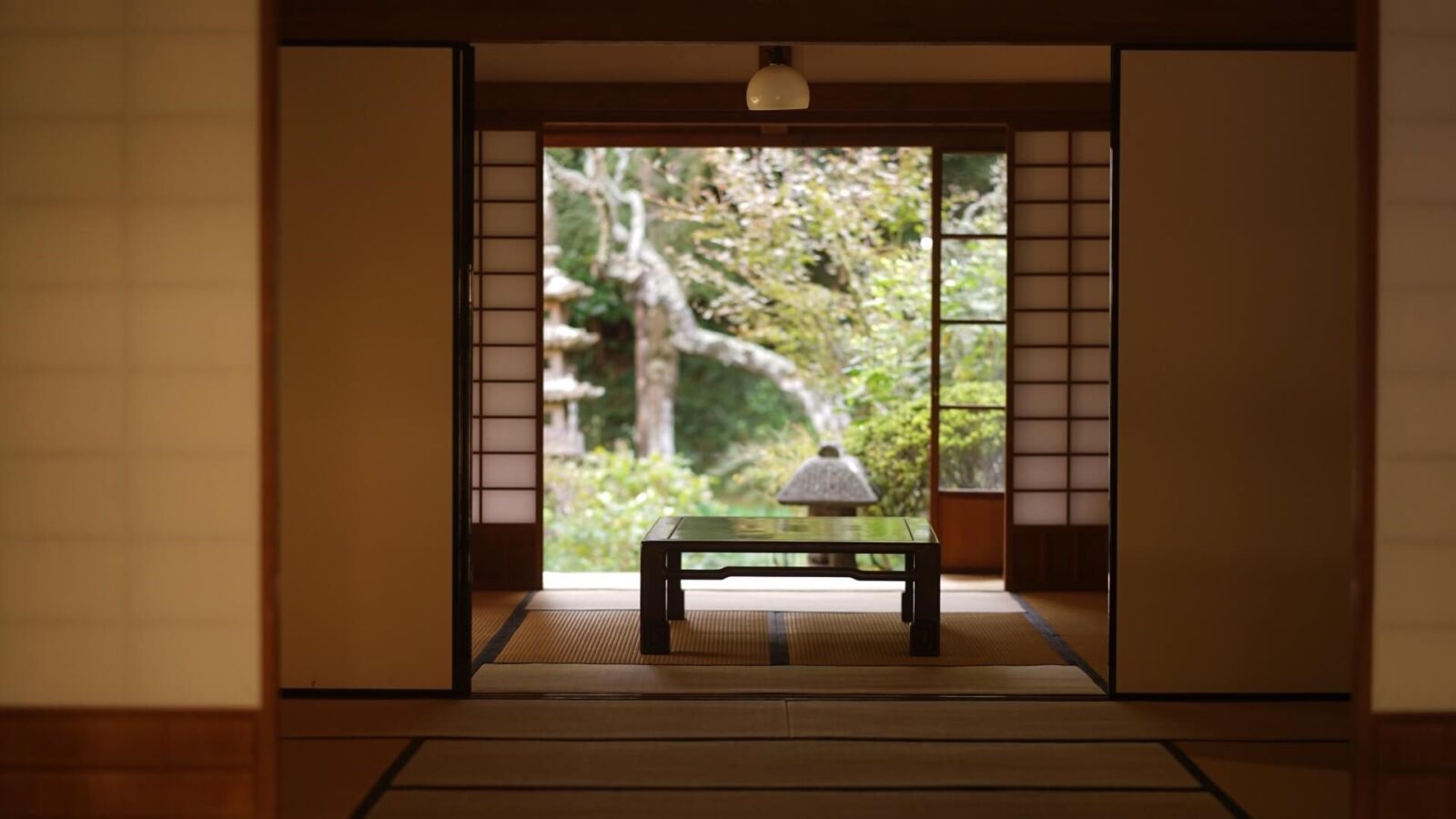
As referenced above, Kamakura’s proximity to both Tokyo and Yokohama means that it can be visited as a day-trip from either city, with many visitors choosing to do just that. For anyone wishing to stay overnight or multiple days, there is also plenty of accommodation to choose from with the areas around Kamakura Station and Hase Station being the most convenient in terms of access to the temples, shrines and transport including local trains and buses.
KAMAKURA STATION AREA
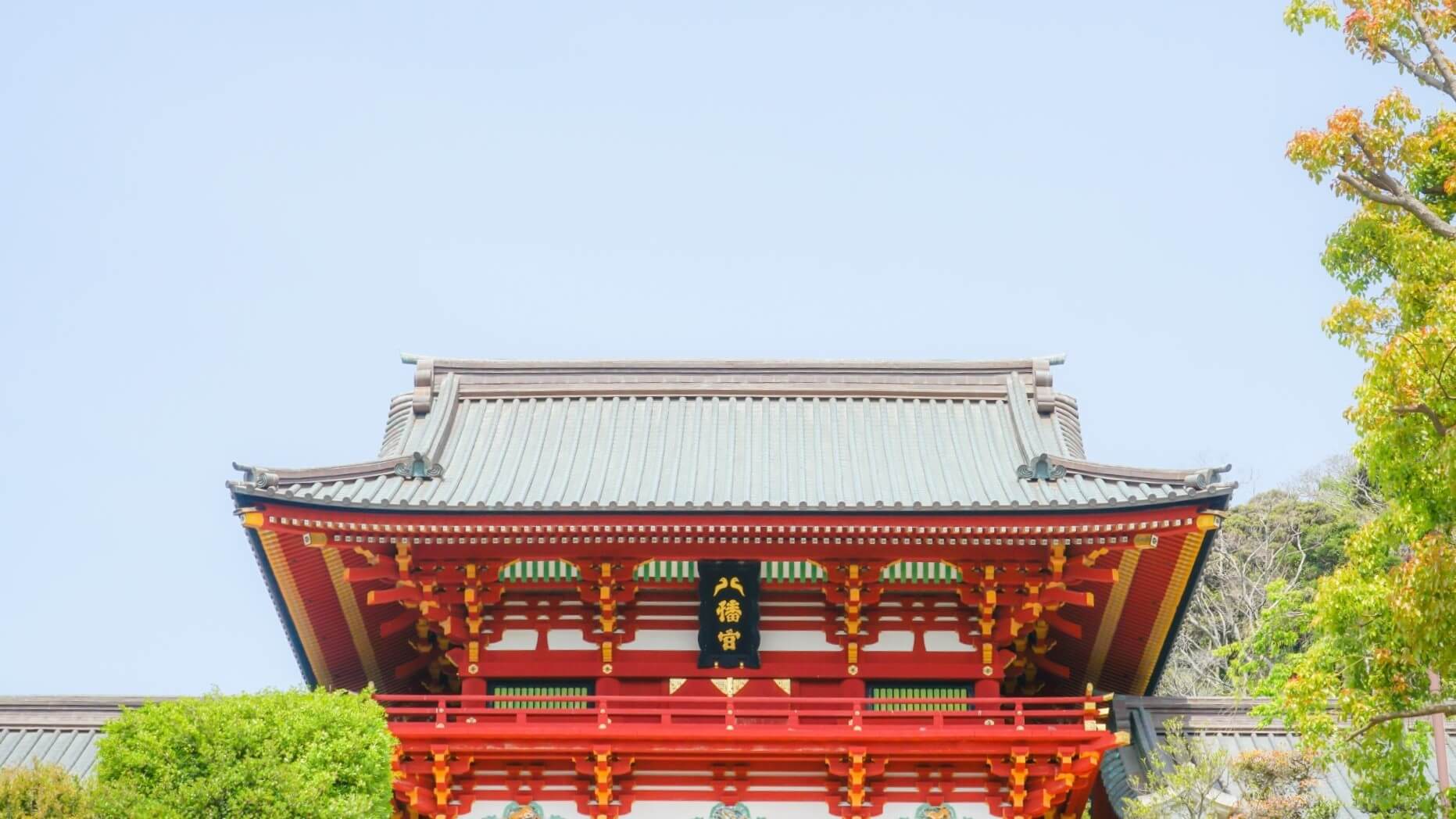
The area immediately around Kamakura Station offers a variety of accommodation including small hotels, guesthouses and hostels. Prices are typically reasonable and staying in this area allows you walk to Tsurugaoka Hachiman Shrine and (for more energetic visitors) temples including Kencho-ji, Meigetsu-in, Engaku-ji, Hokoku-ji and Jomyo-ji. To the south of Kamakura Station, the area around Yuigama and Zaikmokuza beaches offer a lot of accommodation given their popularity with Japanese as a summer destination. As such, most accommodation in the area caters to the domestic market ranging from large hotels to budget lodgings and is not that convenient if your primary interest is visiting the temples and shrines. For more information including accommodation listings, see our ‘Kamakura Station Area’ hotel page.
HASE STATION AREA
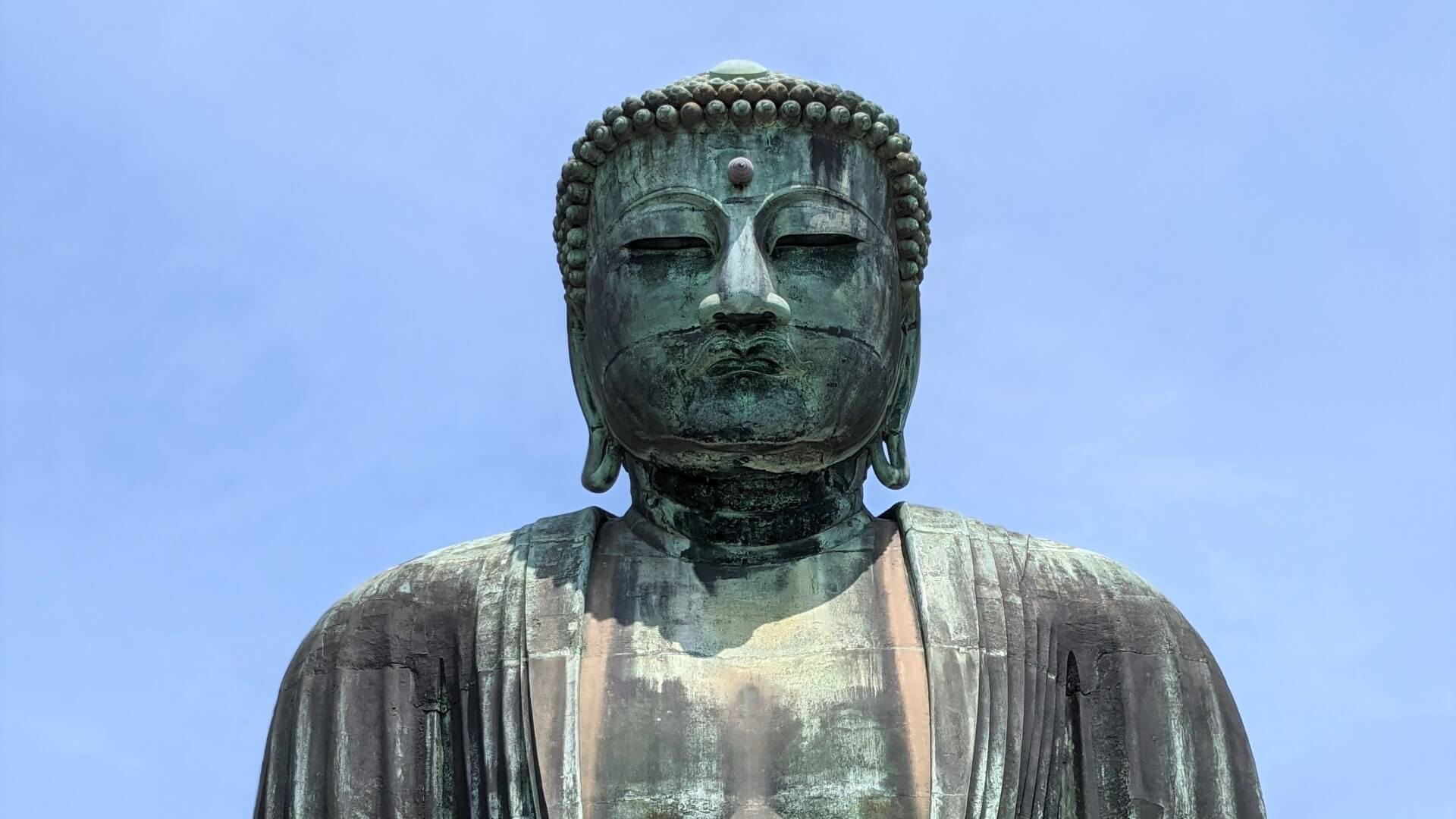
Hase Station is only 4 minutes by train from Kamakura Station and is another convenient area to stay given its proximity to Kotoku-in and the ‘Great Buddha of Kamakura’, Hasedera and other temples – all of which are within walking distance of the station. Much like the area around Kamakura Station, in this area you’ll find a range of accommodation options ranging from high-end ‘ryokan’ (traditional guesthouses), mid-range hotels and budget lodgings. To the southeast of Hase Station, the area around Yuigama and Zaikmokuza beaches offer a lot of accommodation given their popularity with Japanese as a summer destination. As such, most accommodation in the area caters to the domestic market ranging from large hotels to basic / budget lodgings. While all of these should be comfortable enough for international visitors, they aren’t the most convenient for accessing the temples and shrines as their location is determined by proximity to the beaches. Nevertheless, should you wish to stay in the area, you can find some decent options especially outside of summer when prices should be notably lower. For more information including accommodation listings, see our ‘Hase Station Area’ hotel page.
ENOSHIMA AREA
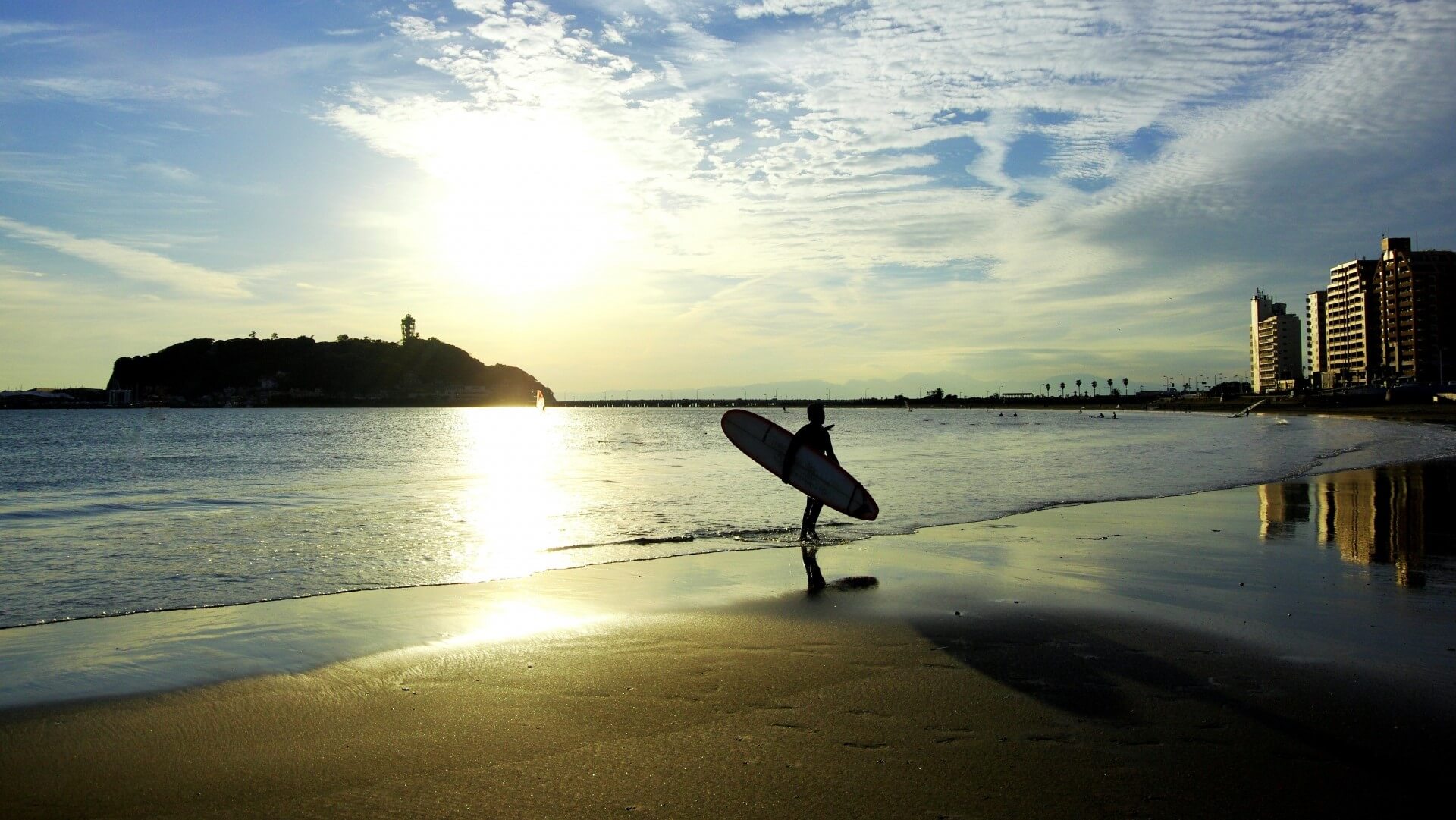
Between 20 to 25 minutes to the west of Kamakura by train, Enoshima is a coastal area offering more beaches including the island of Enoshima. Another destination popular with Japanese looking for a beach holidays within easy reach of Tokyo and Yokohama, there’s plenty of accommodation in the area ranging from mid-range to budget hotels along with self-contained options and basic guesthouses. Staying in Enoshima is best-suited to visitors wanting to visit attractions in the area, in combination with their visit to Kamakura. For more information including accommodation listings, see our ‘Enoshima Area’ hotel page.
HOW TO GET TO KAMAKURA
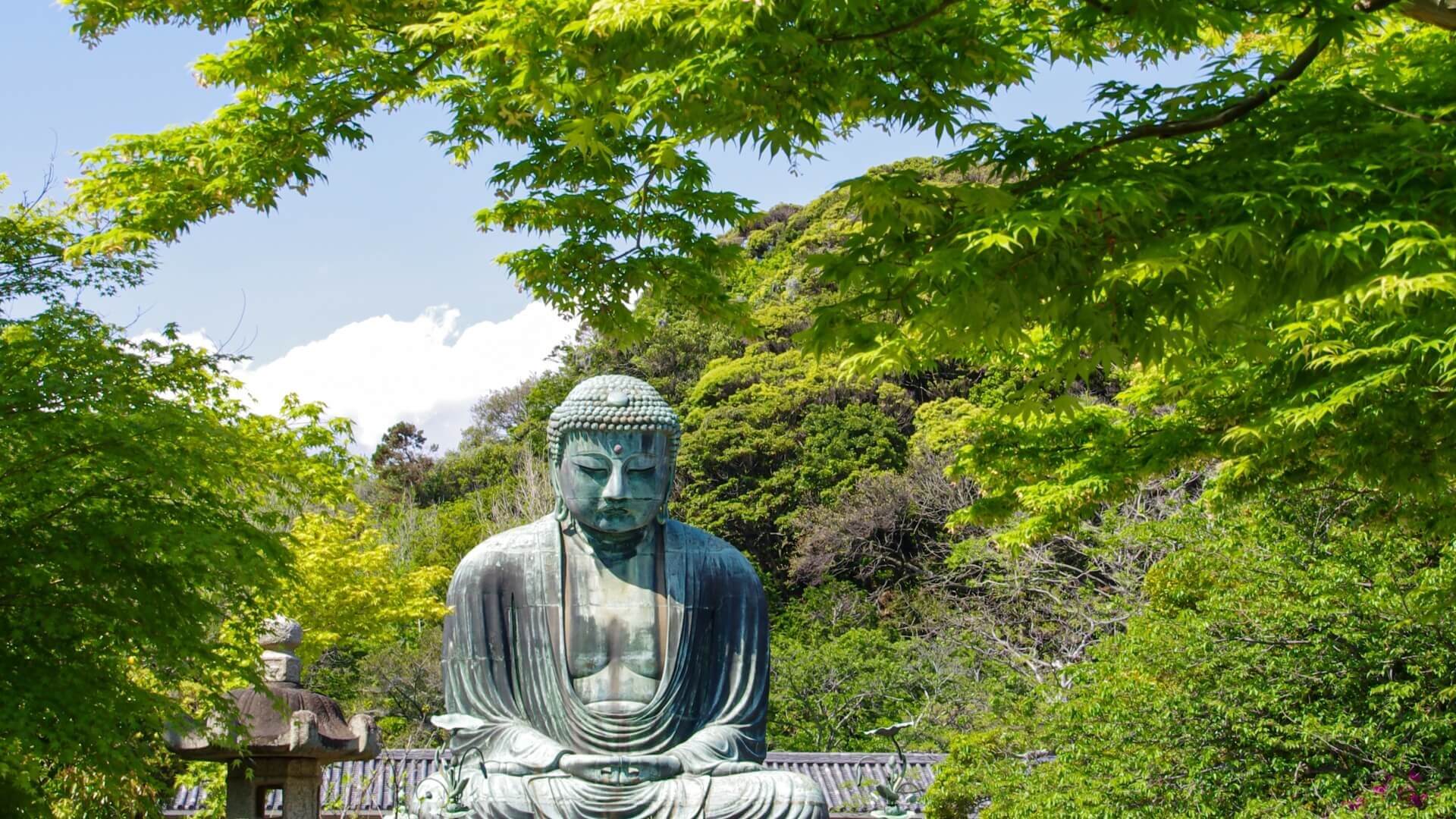
Kamakura lies around 60 minutes to the south of Tokyo and less than 30 minutes to the south of Yokohama, making it easy to reach from Japan’s two largest cities. Our ‘How to Get to Kamakura’ page has everything you need to know about getting there from those cities and starting points including Nagano, Kanazawa, Kyoto, Osaka and more.
THINGS TO DO IN TOKYO
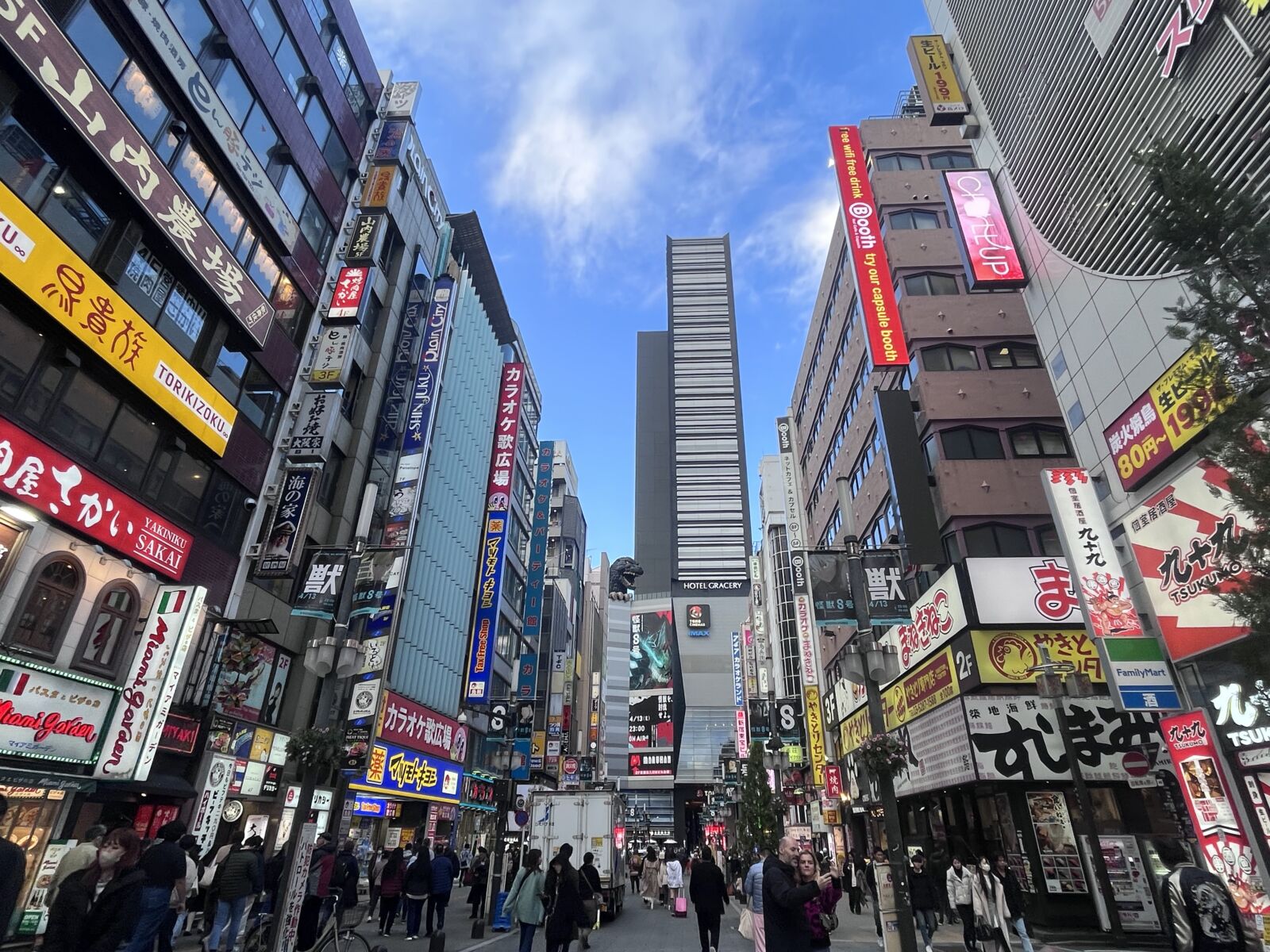
This page would not be complete without also suggesting our top recommendations on things to do in Tokyo as well. Why not check out our 25 Things to Do in Tokyo page which will also give you plenty of inspiration for your time spent in Tokyo. Here you will find some of the best activities and recommendations on how to spend your time in the Capital, as well as some tours that you can join to make the most out of your trip!
From watching Sumo wrestlers train to eating the freshest sushi at local markets, playing Taiko drums to exploring hidden shrines and temples, Tokyo truly has it all. Our Tokyo tours enable you to pick and choose from a wide range of areas and activities to explore during your trip. Want to explore lesser known neighbourhoods in Tokyo, or do you want to get into the hustle and bustle of the world’s most populated city, then click the link above and start exploring what you can do in Tokyo to make your trip unforgettable.
BEST TOURS IN TOKYO
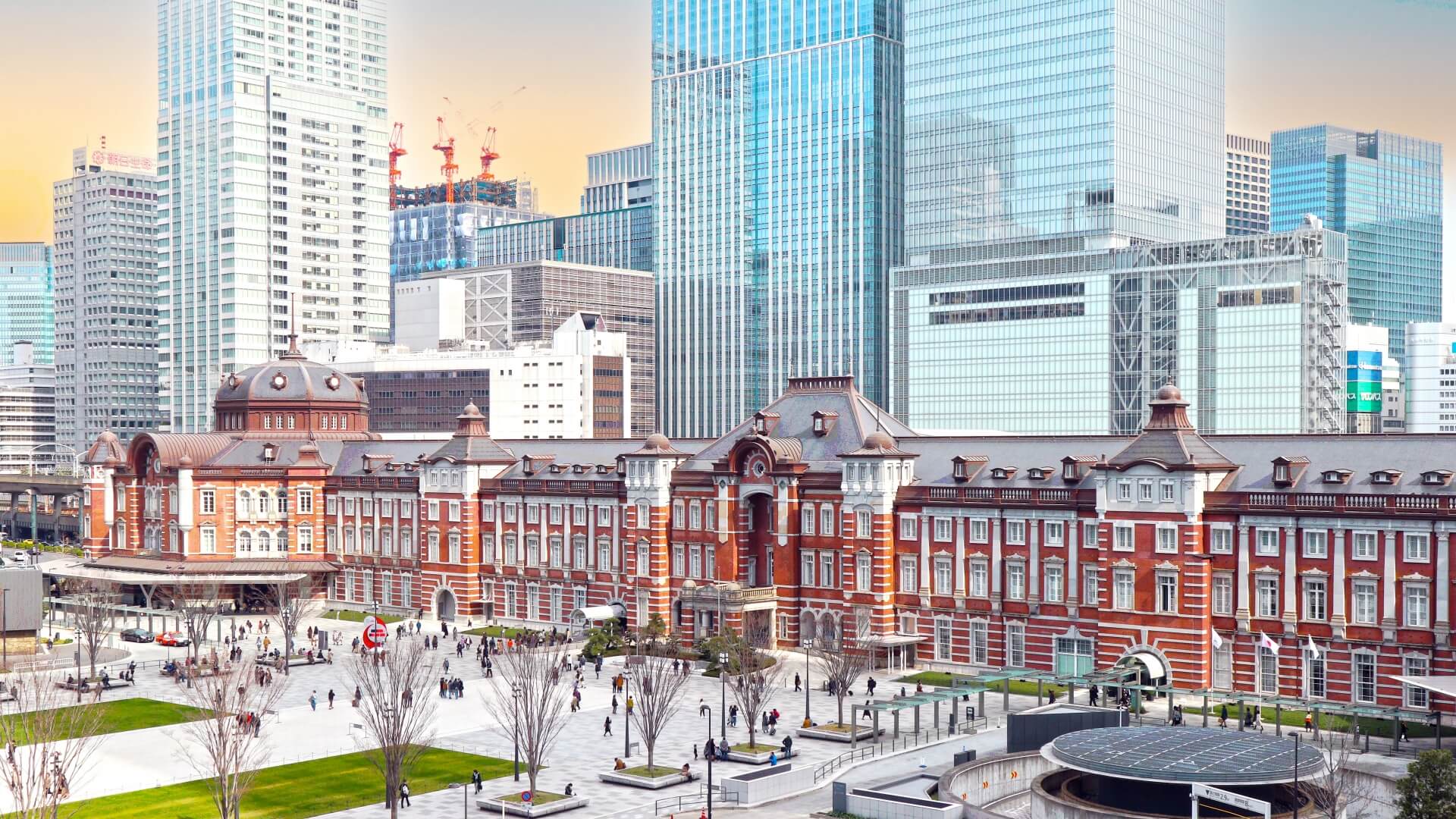
Tokyo is steeped in history. The city has faced many hardships from earthquakes, fires and the air raids of WW2, and unfortunately many of its oldest buildings and structures have disappeared over time. However, Tokyo does a fantastic job at celebrating and retaining much of its character and culture, with stunning renovations of temples and shrines, museums housing some of Japan’s finest artefacts, and pockets of neighbourhoods that have managed to preserve its original architecture despite the many challenges its faced. Pop culture lovers will rejoice at Japan’s modern aesthetic, with its bright lights and neon signs that make the city glow at night. There is so much to see and do in Tokyo. Check out our ’Best Tours in Tokyo’ page which will give you information on the best tours in Tokyo and the best day trips from Tokyo throughout the Kanto region.
THE BEST DAY TRIPS AND GETAWAYS FROM TOKYO
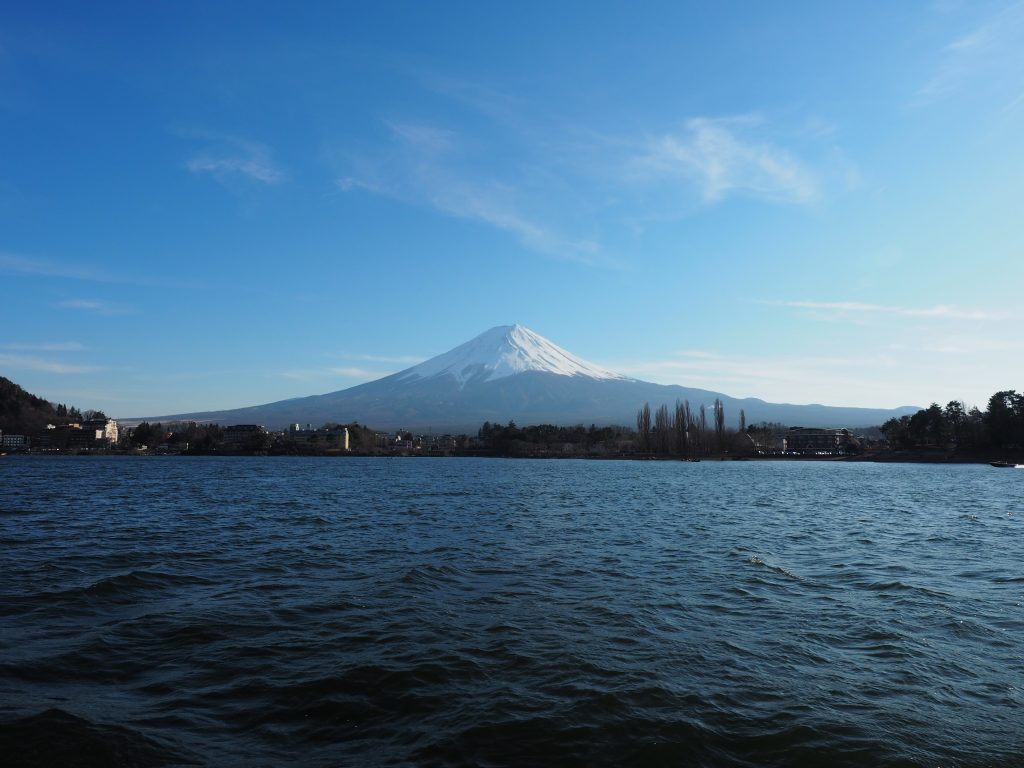
For more information and inspiration on what excursion day trips, overnight stays and multi day trips you could do outside of Tokyo, check out our 30 Things To Do Near Tokyo: The Best Day-Trips & Getaways From The Capital page!
PLAN YOUR VISIT TO JAPAN
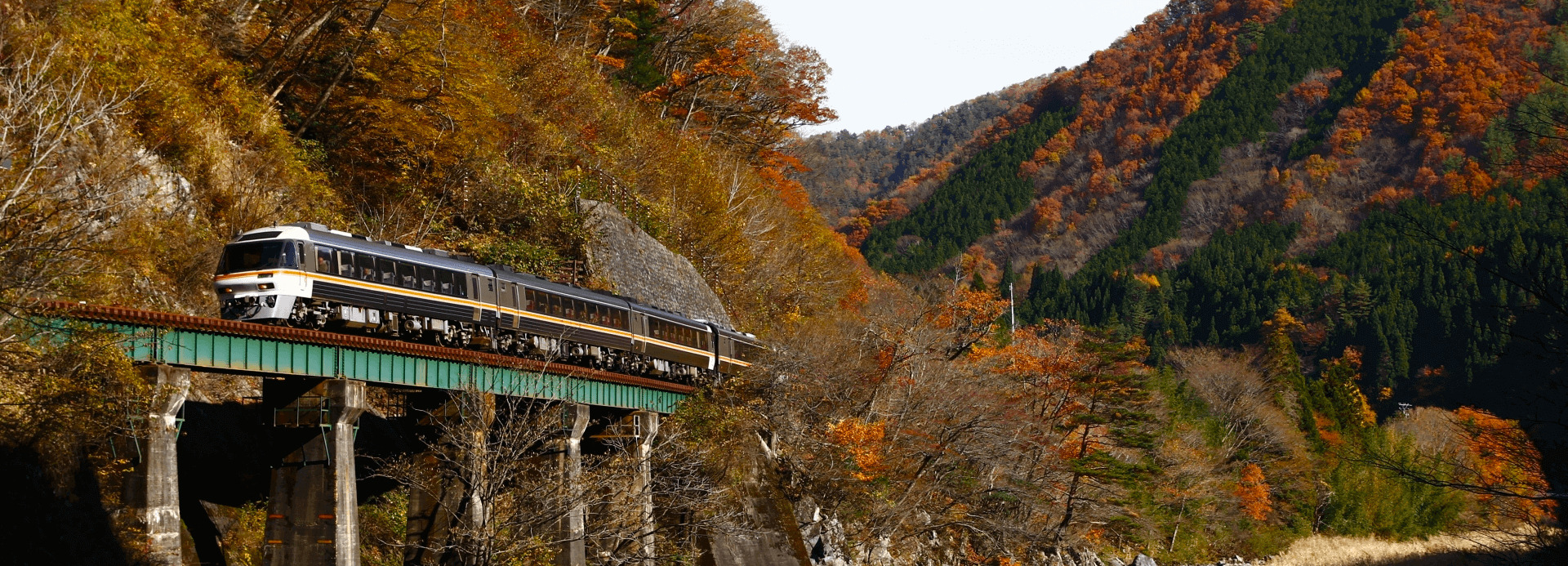

Heading to Kamakura using the rail system is quick, easy and comfortable. Unfathomable in its size and efficiency, moving around the country by train opens-up all regions of Japan for exploration. Our ‘Plan Your Visit’ page has everything you need to know about visiting Japan – from tips on the best time to travel, times to avoid, entering and exiting the country, money matters, staying connected, accommodation, staying safe and healthy and plenty more to ensure that you get the most out of your time here.














